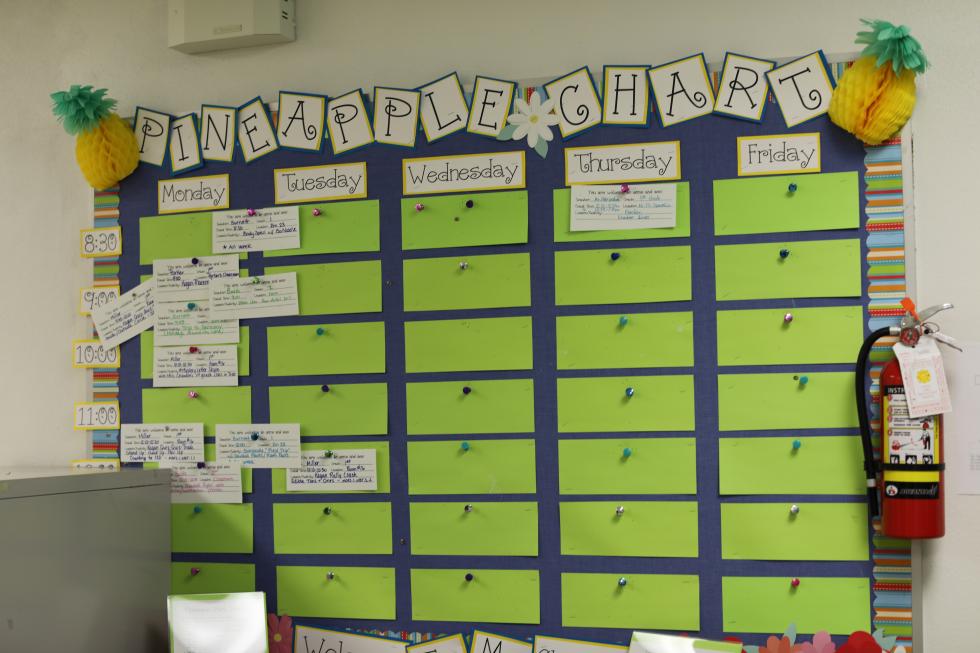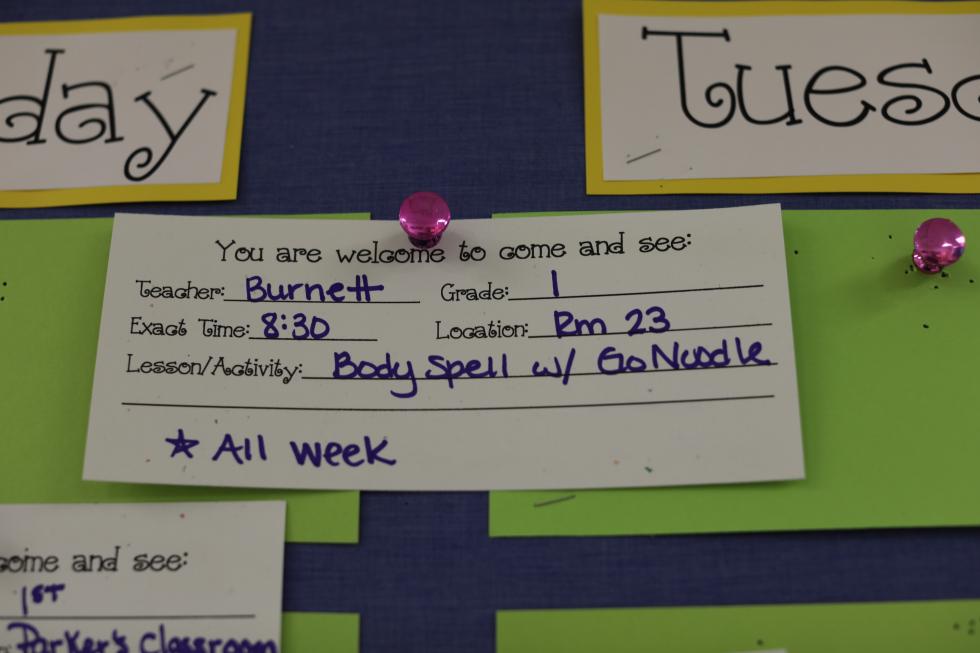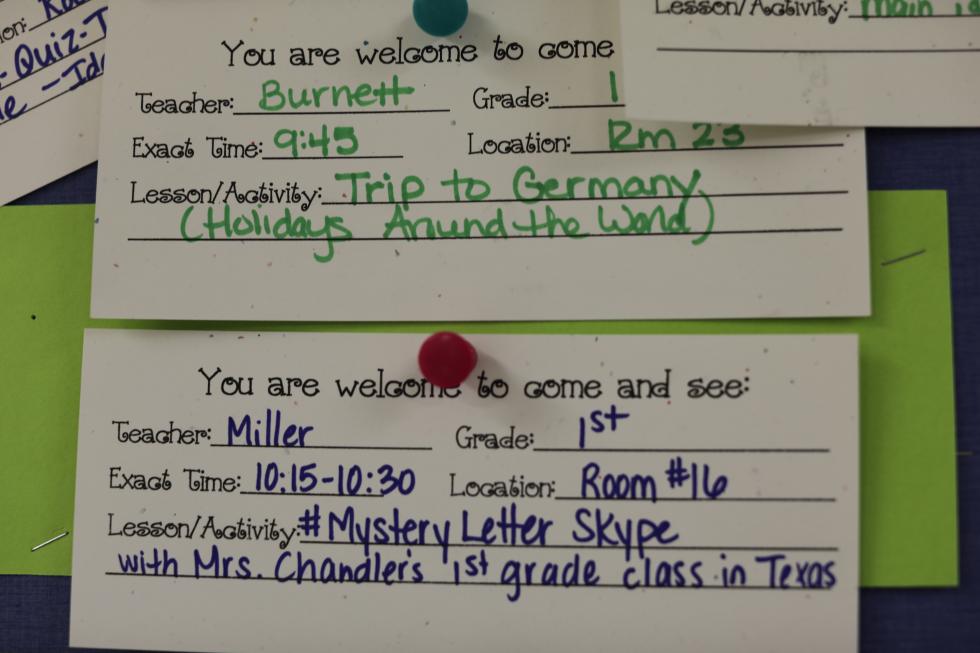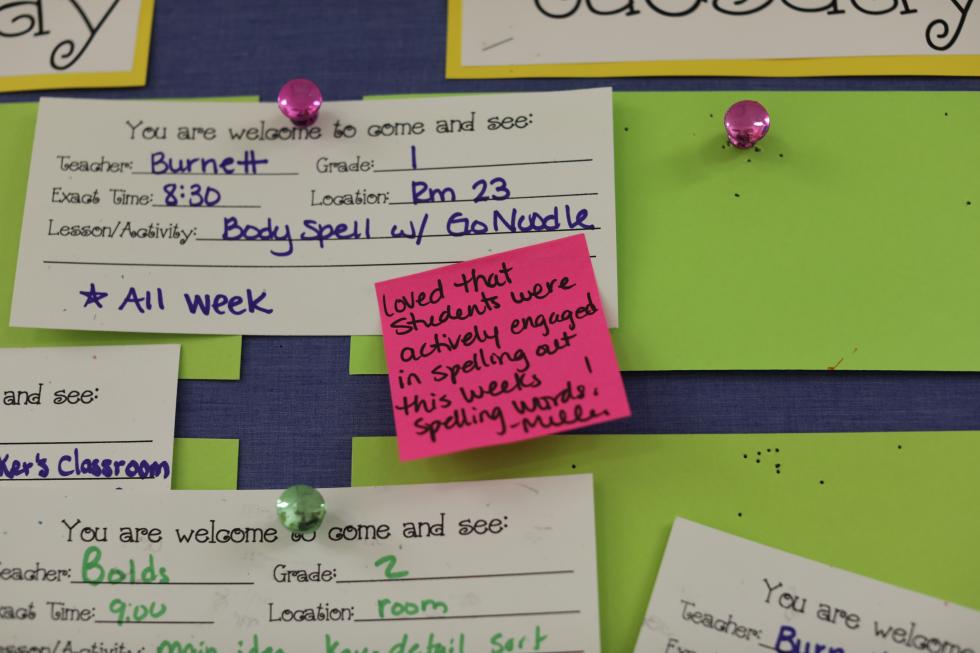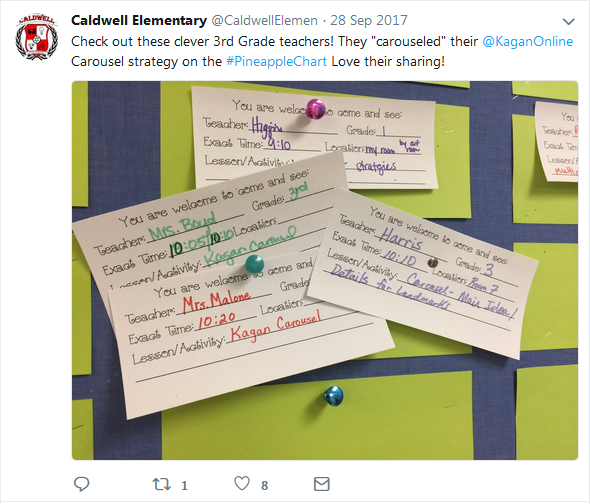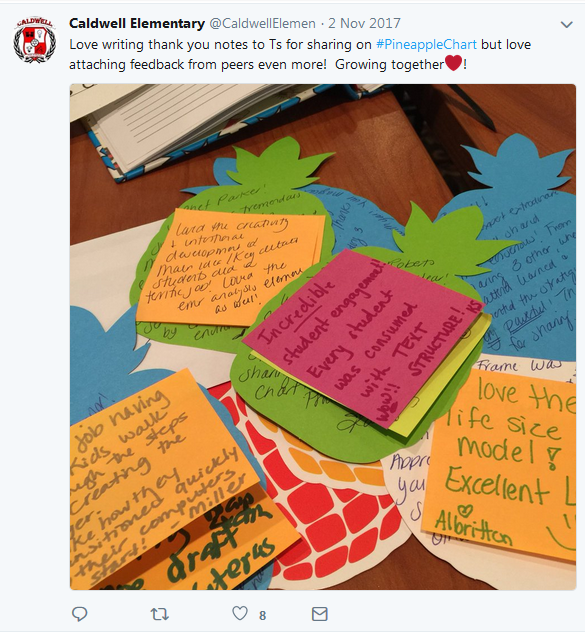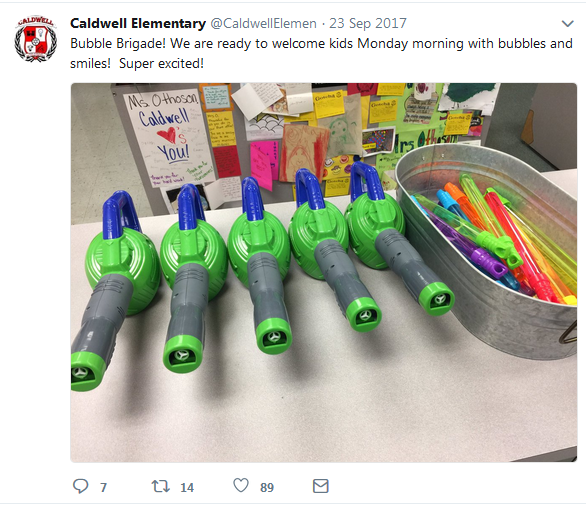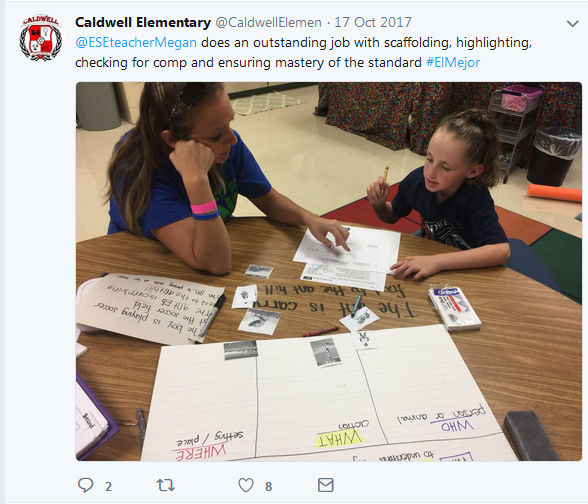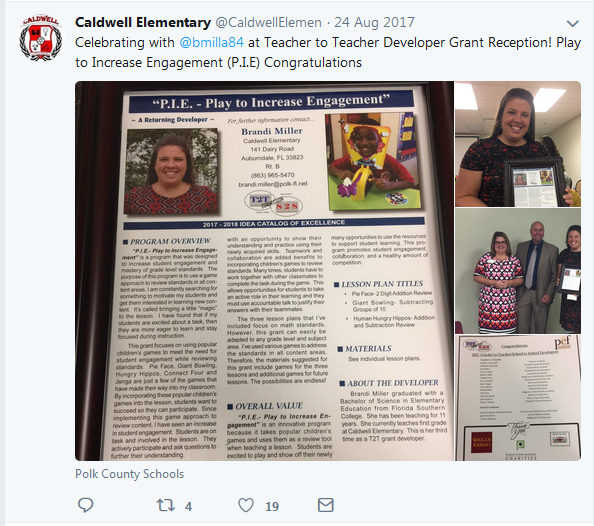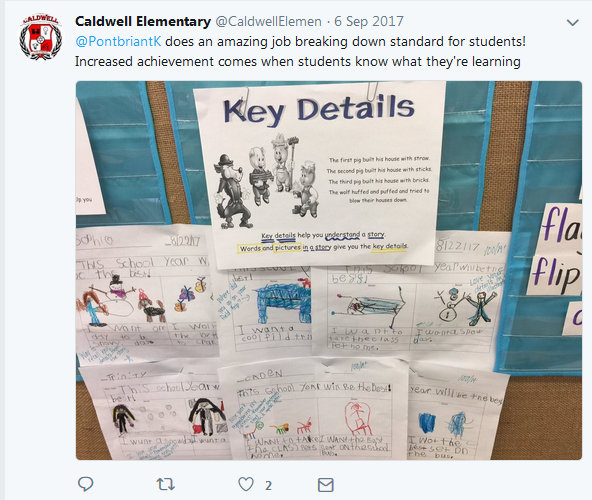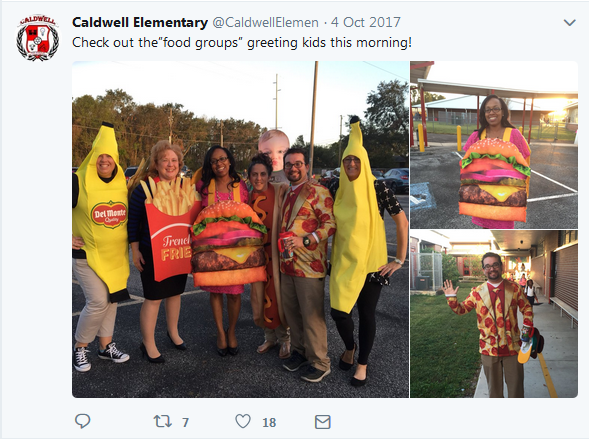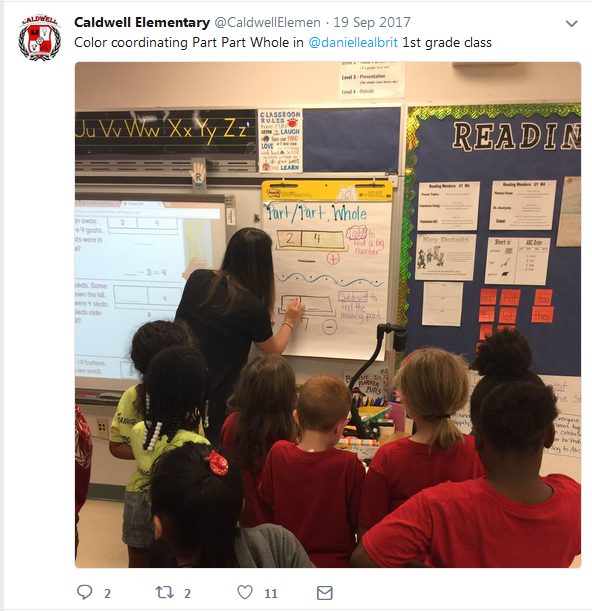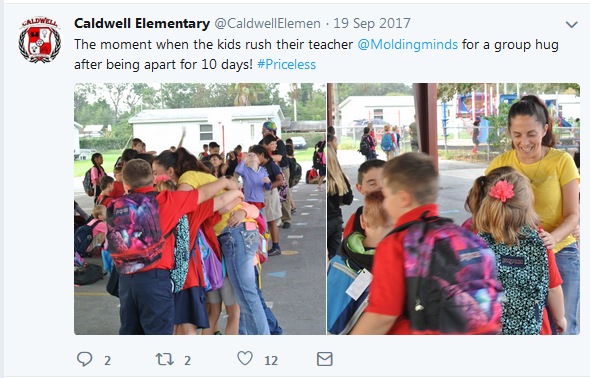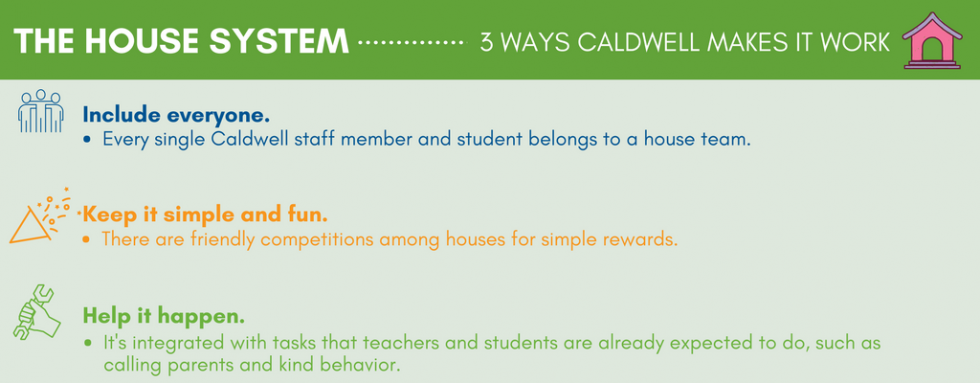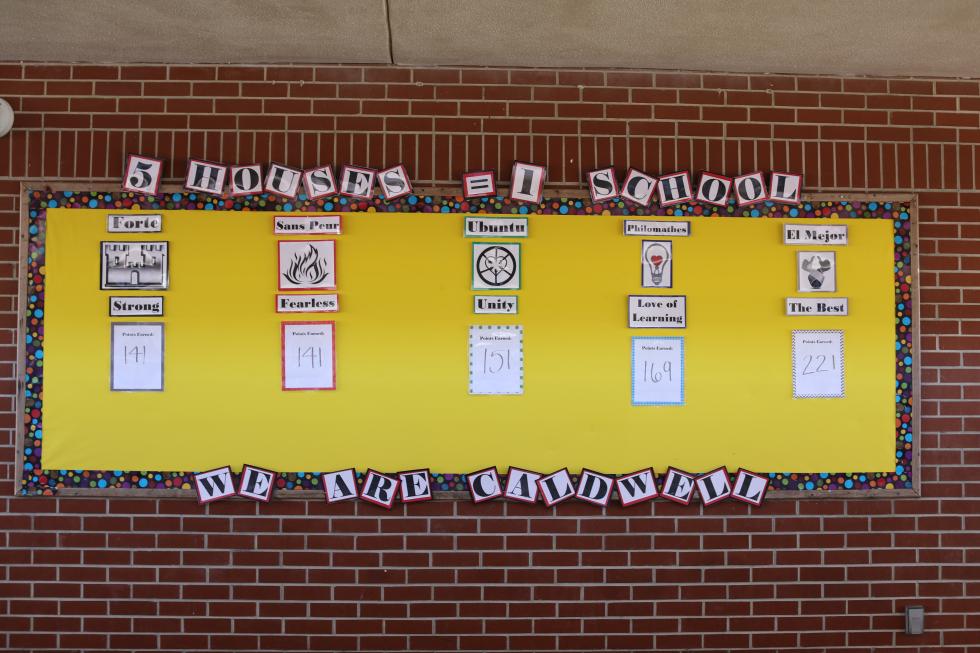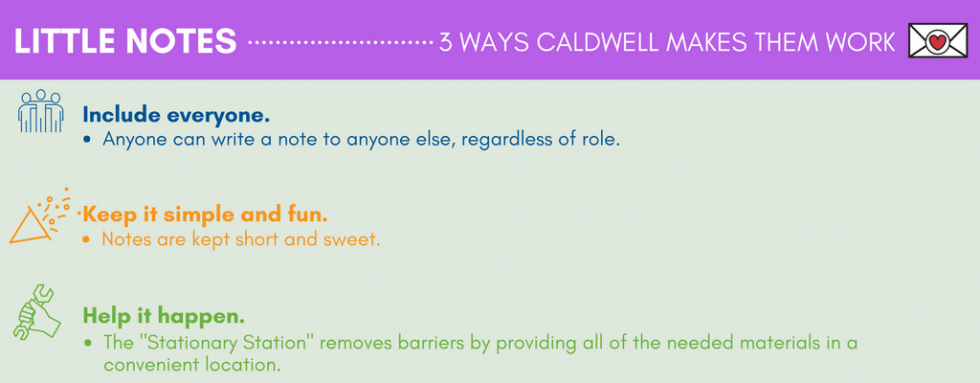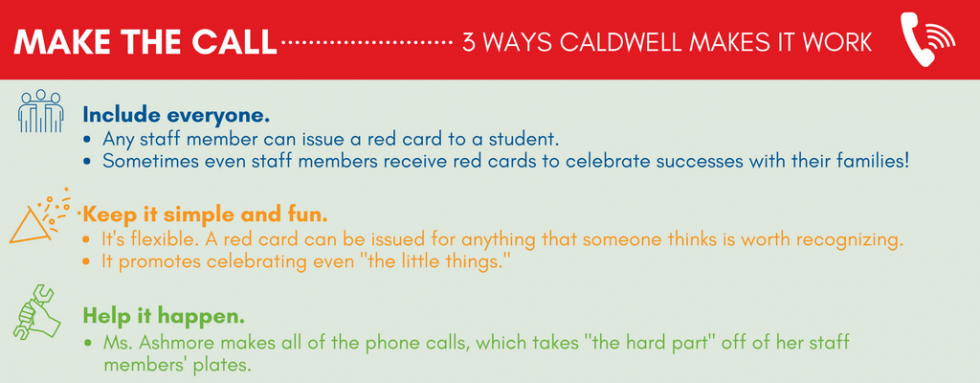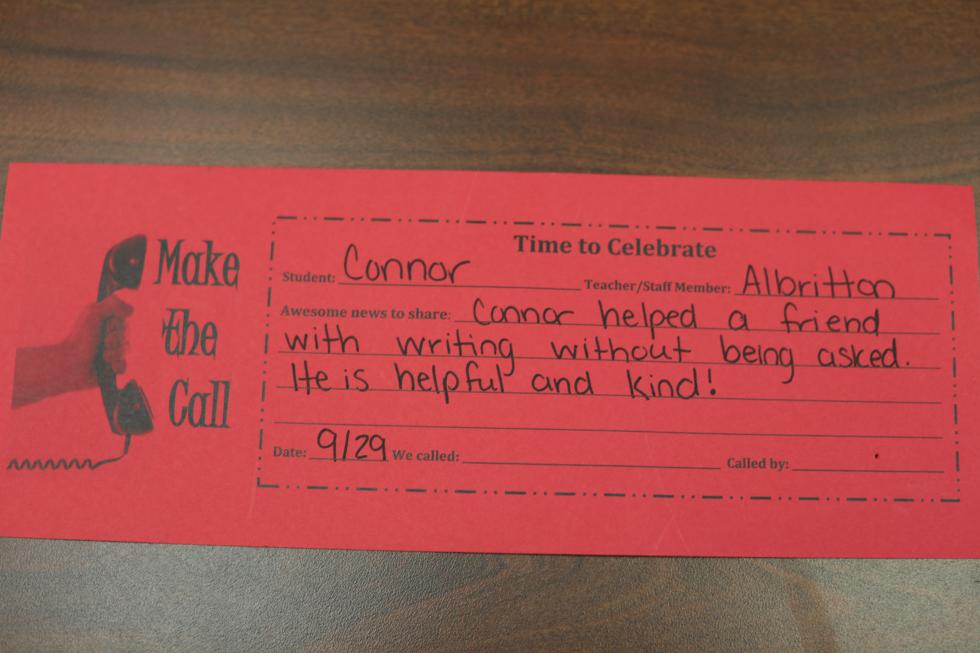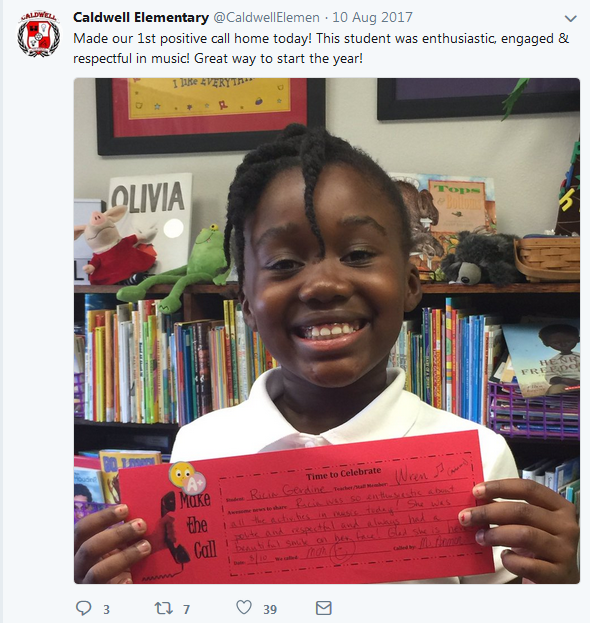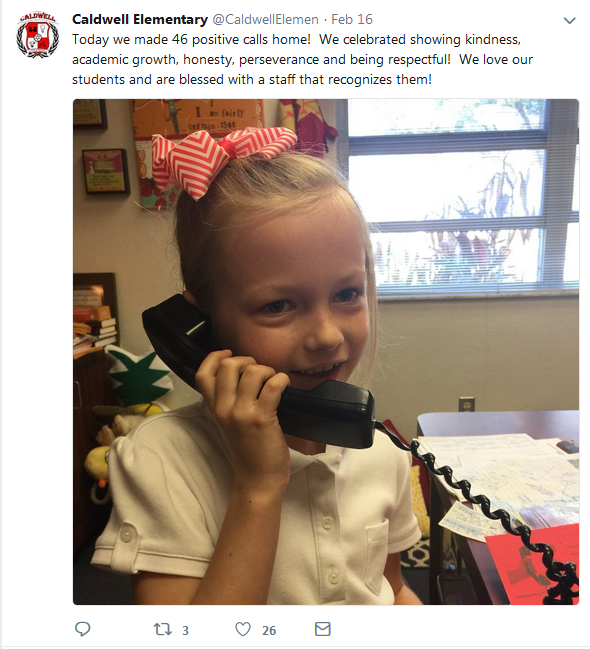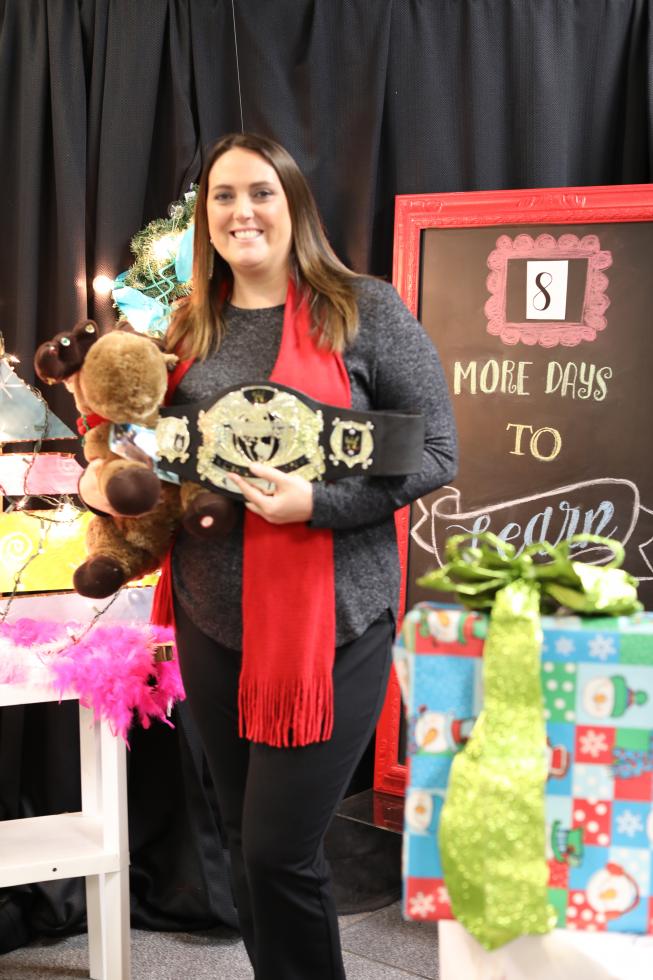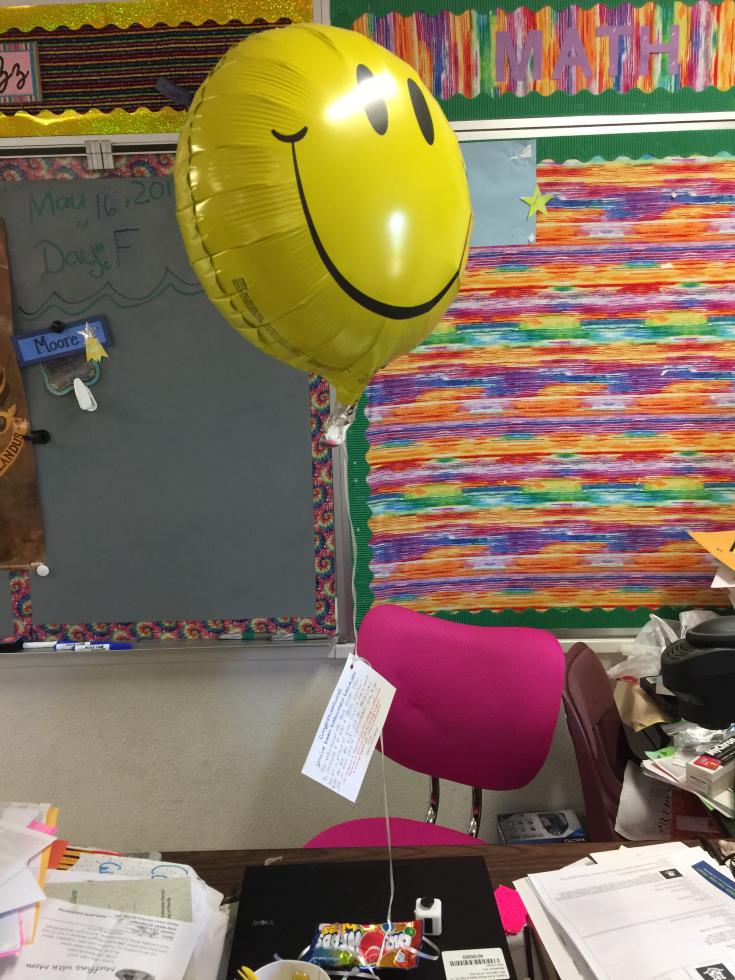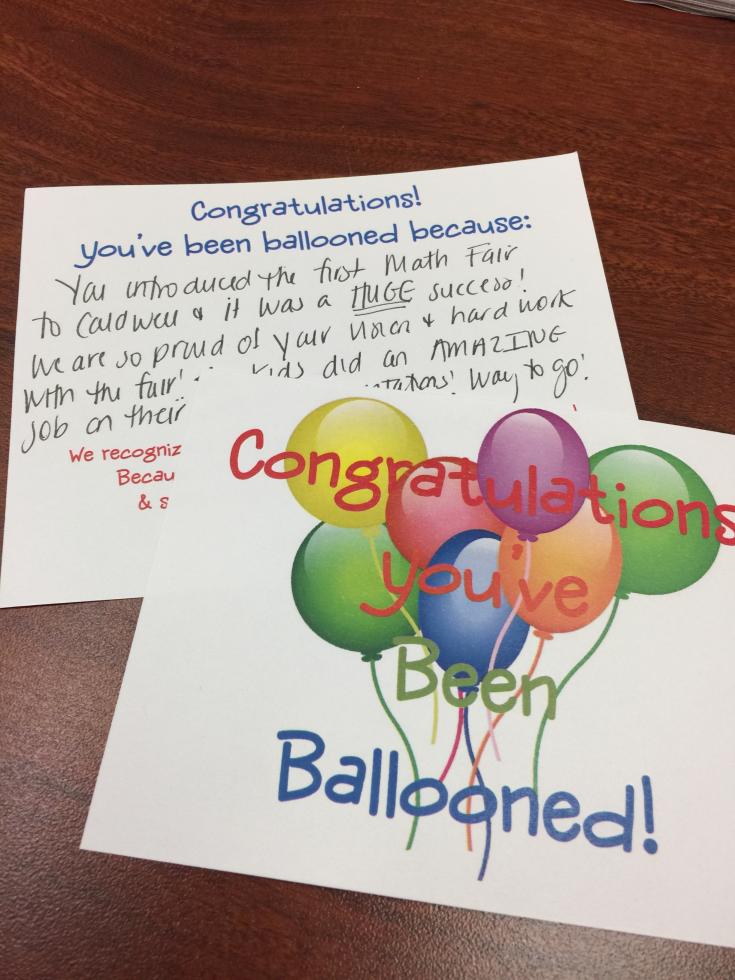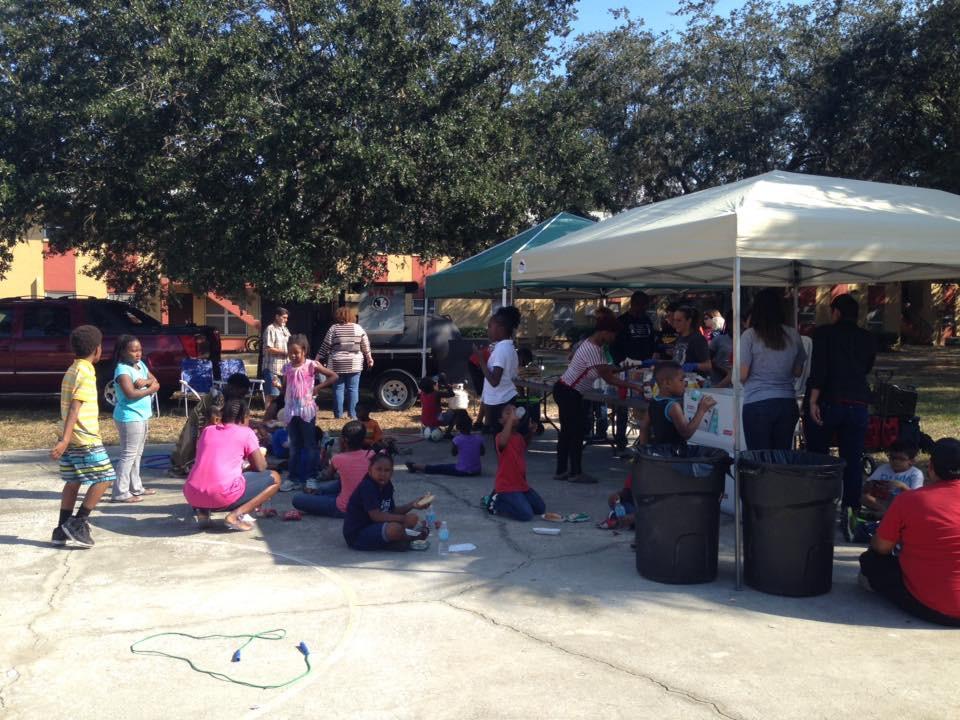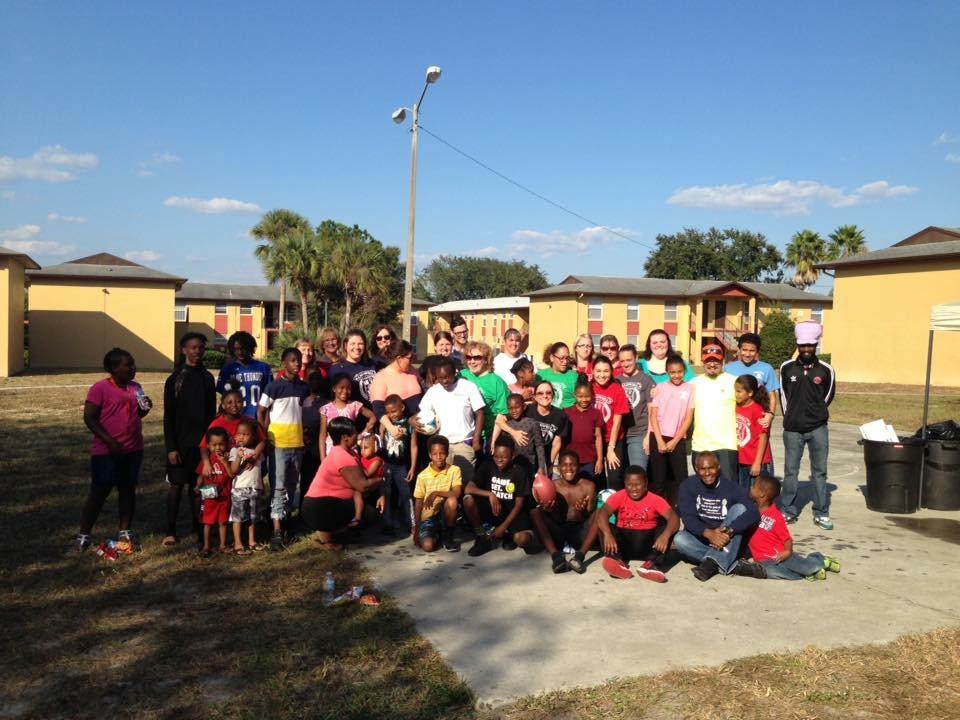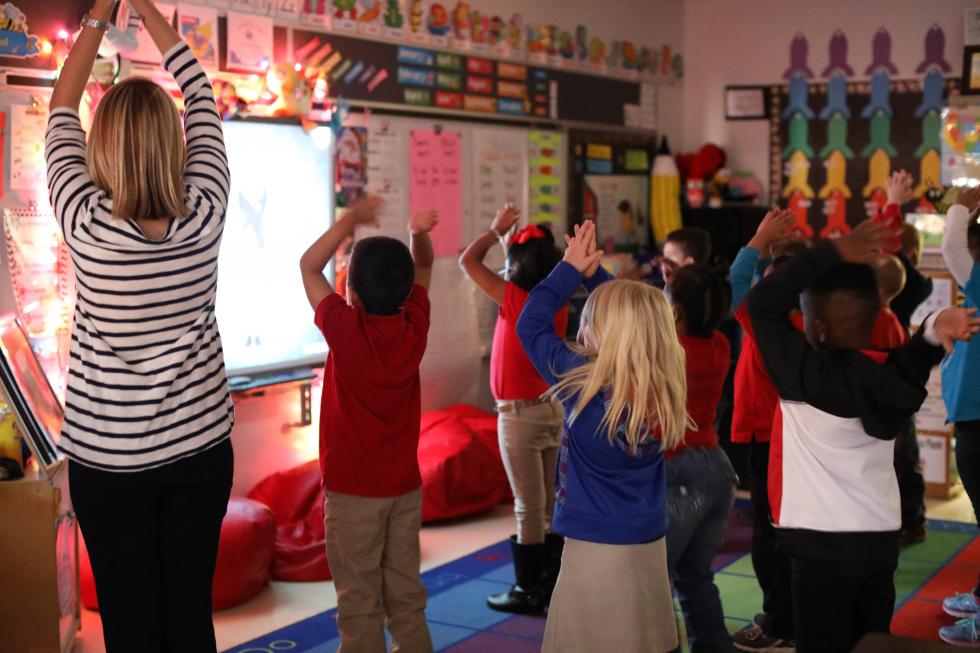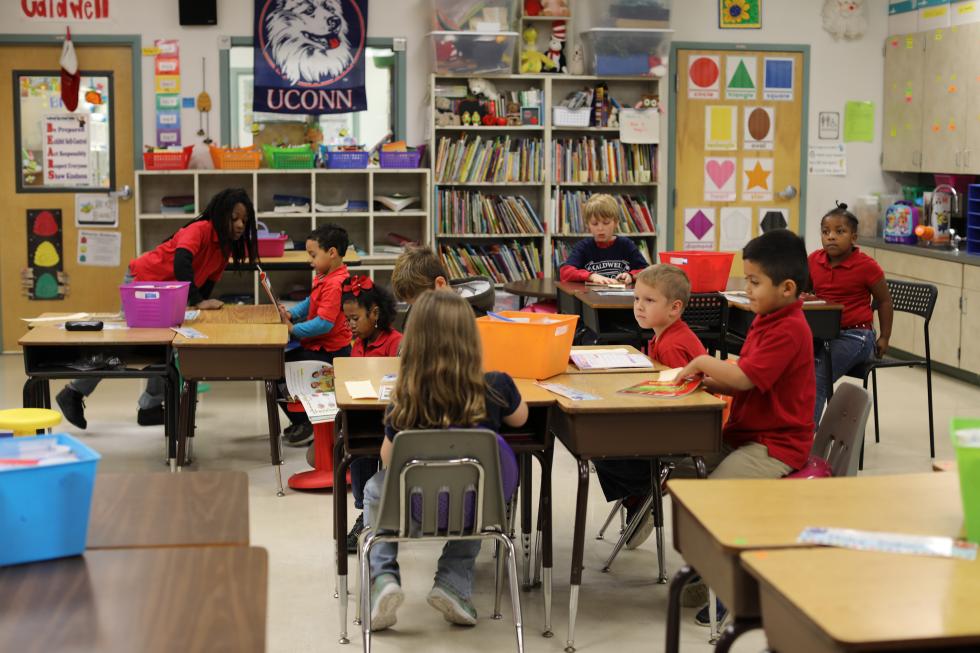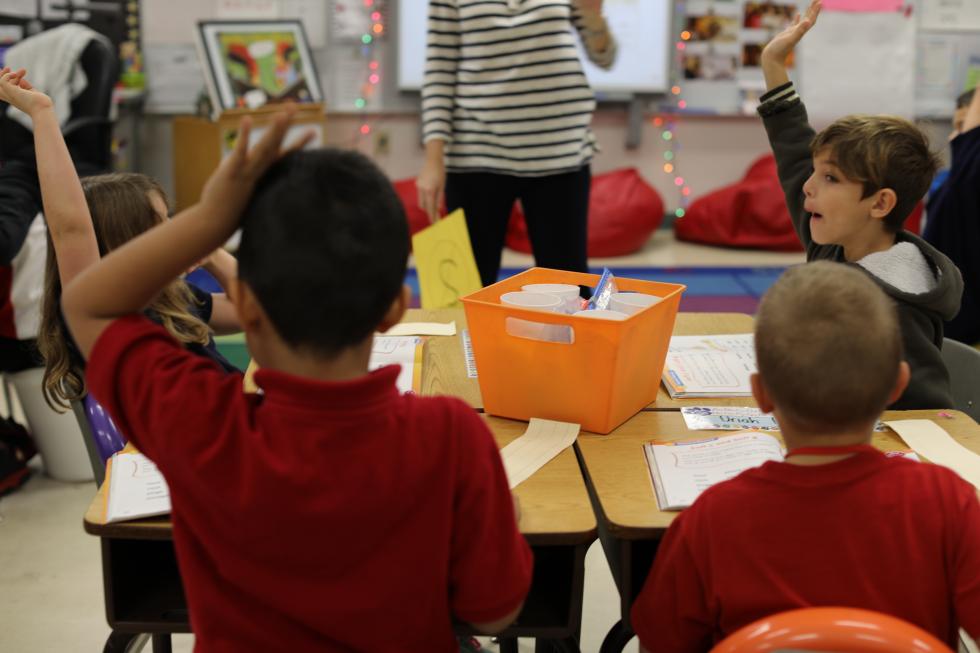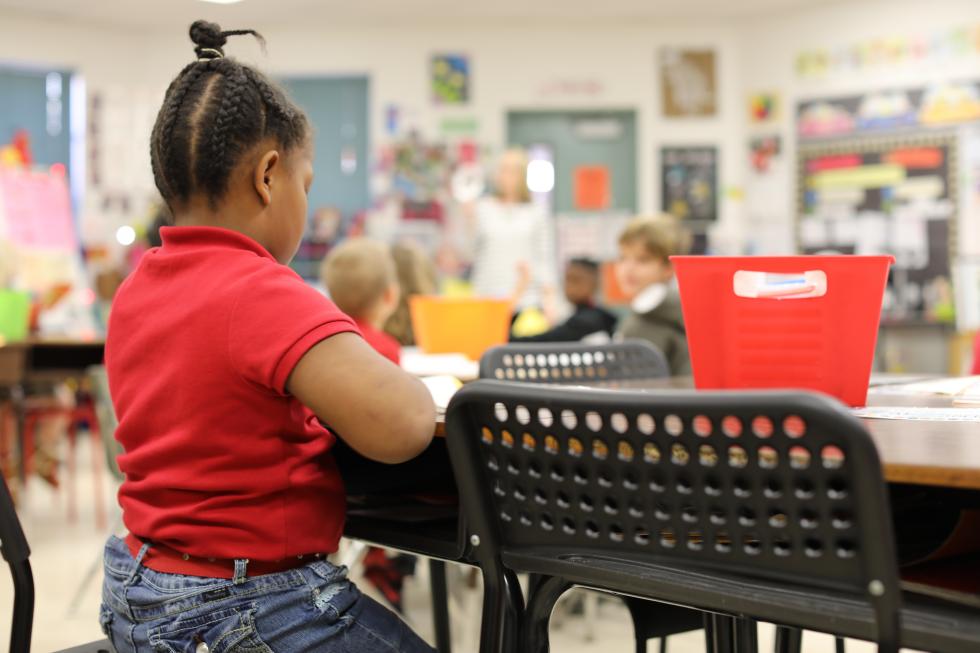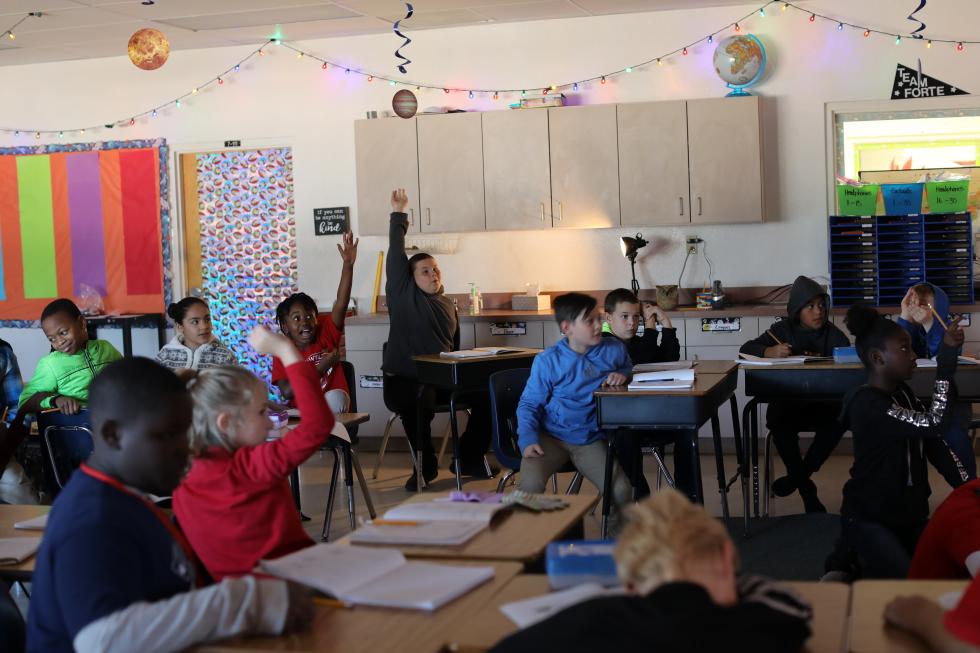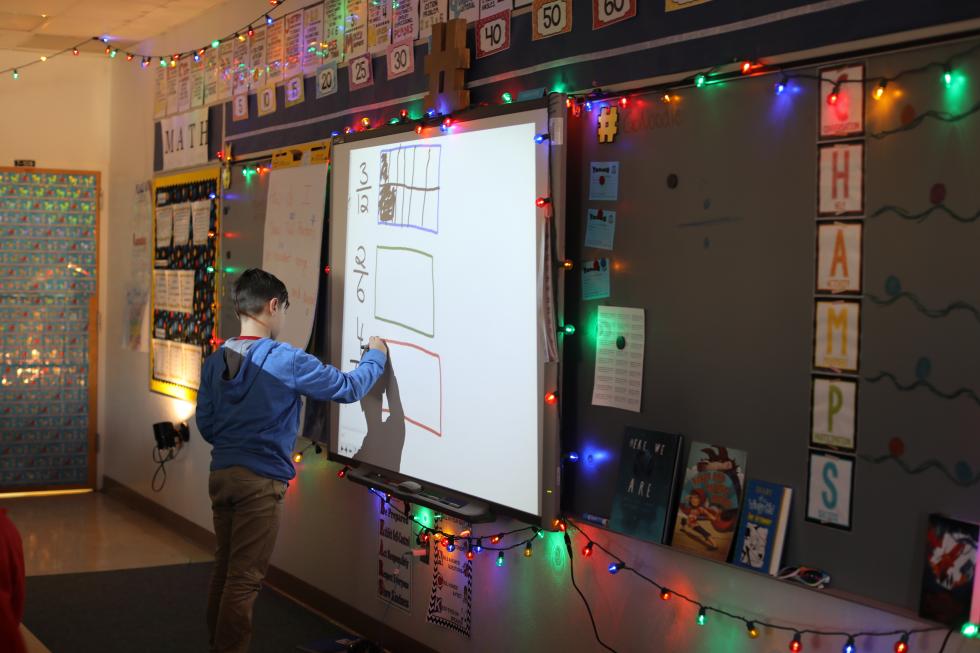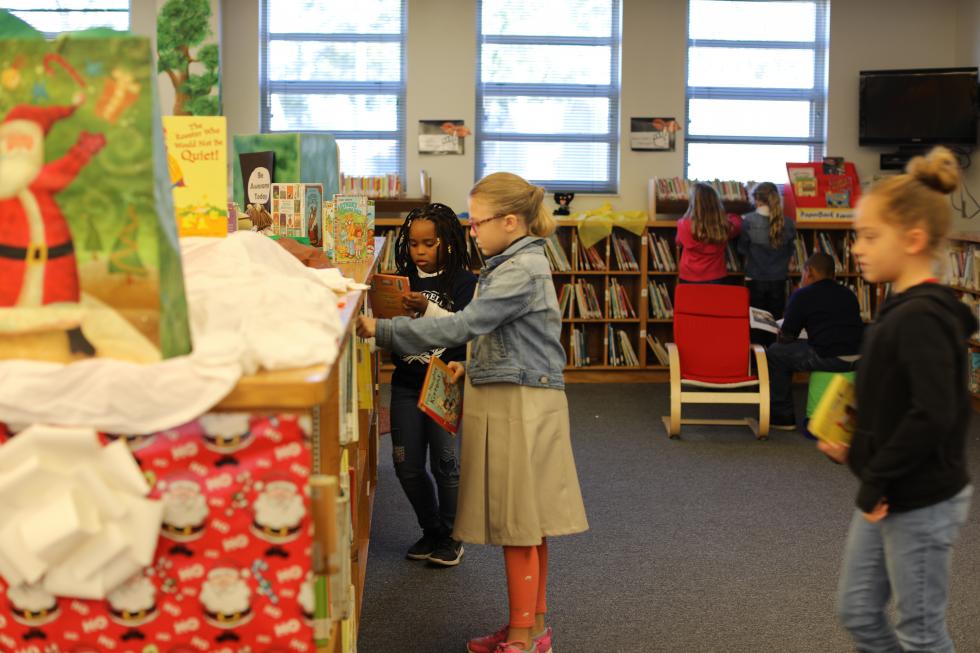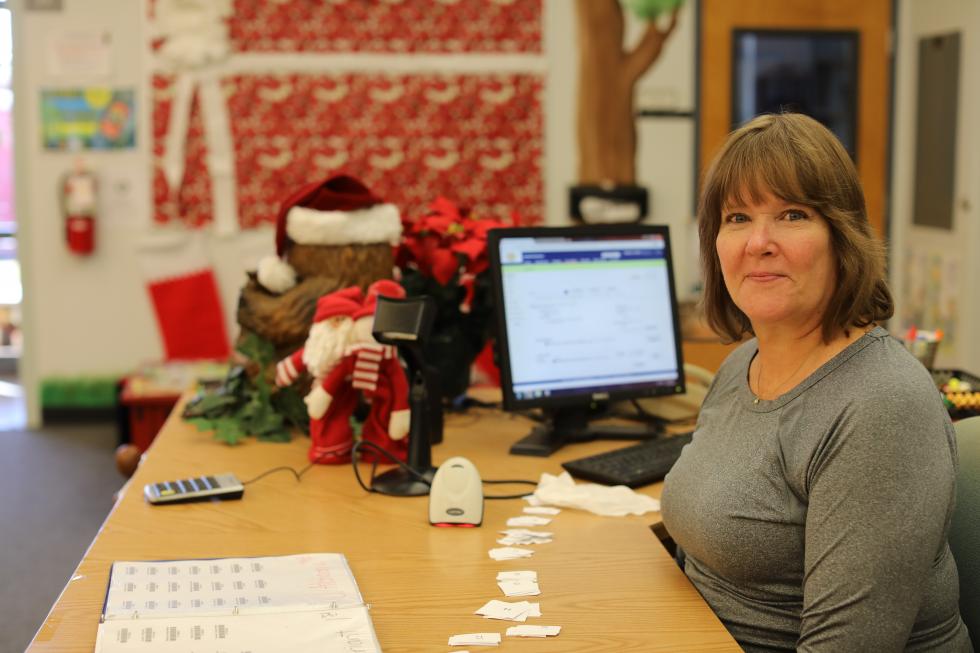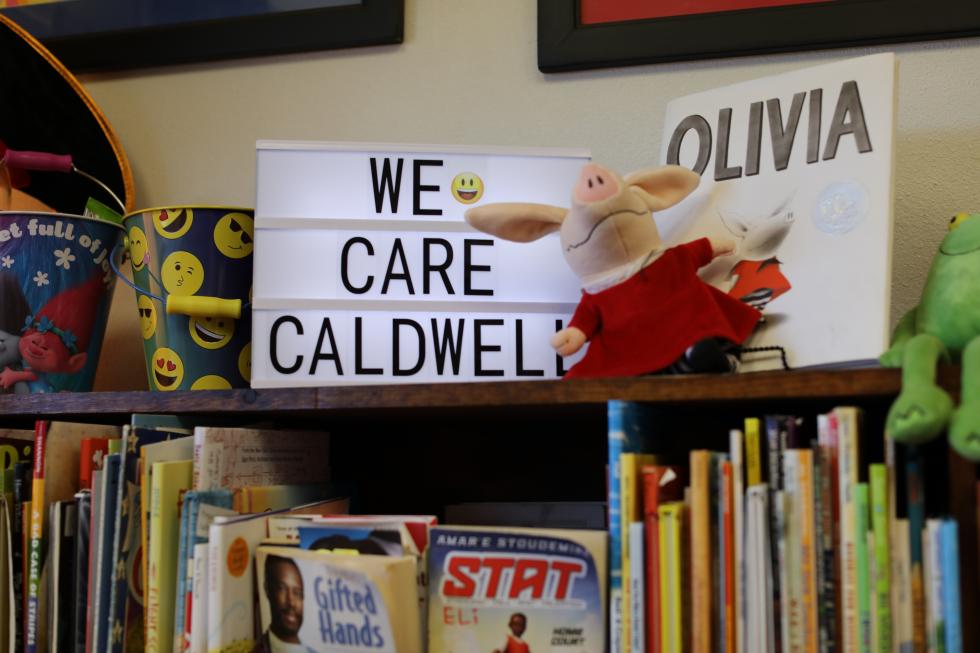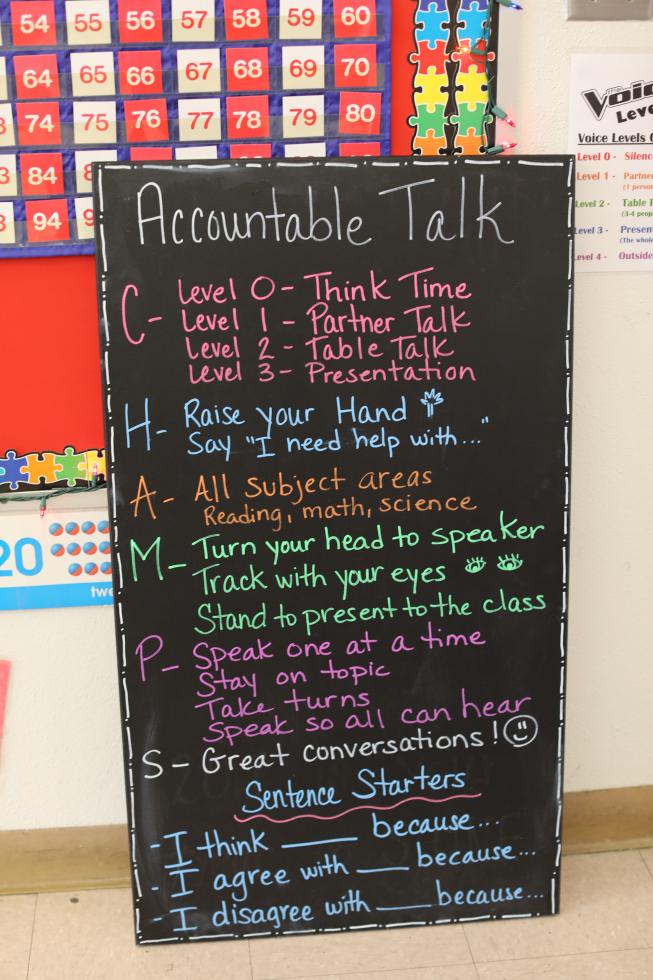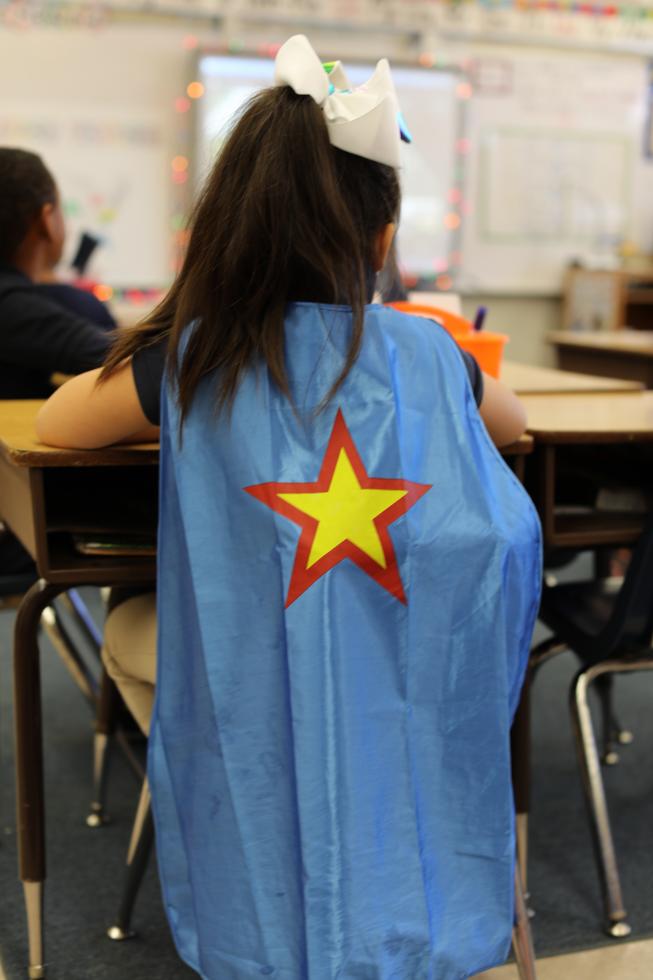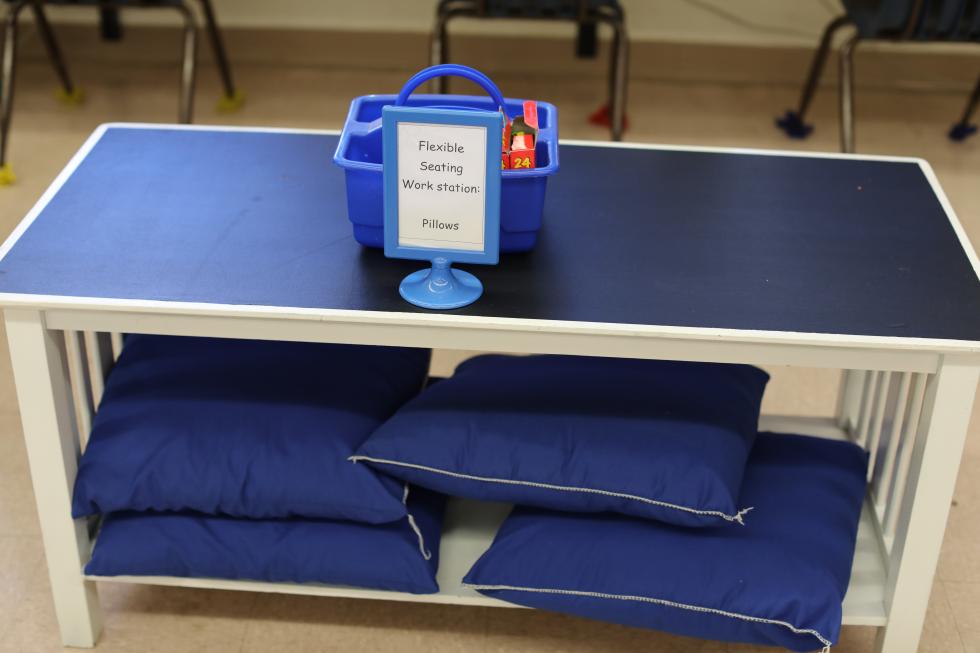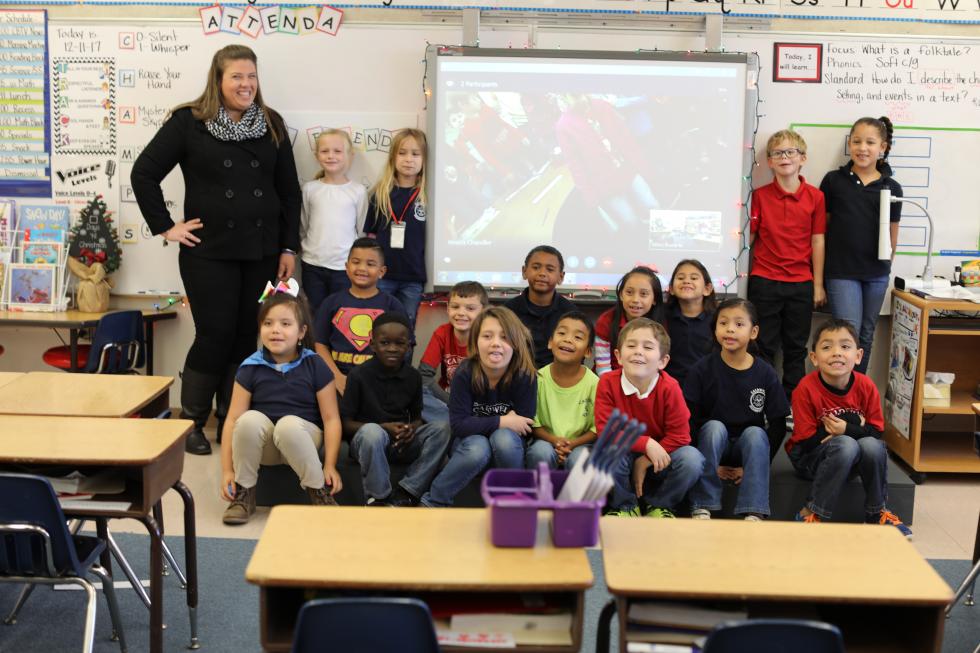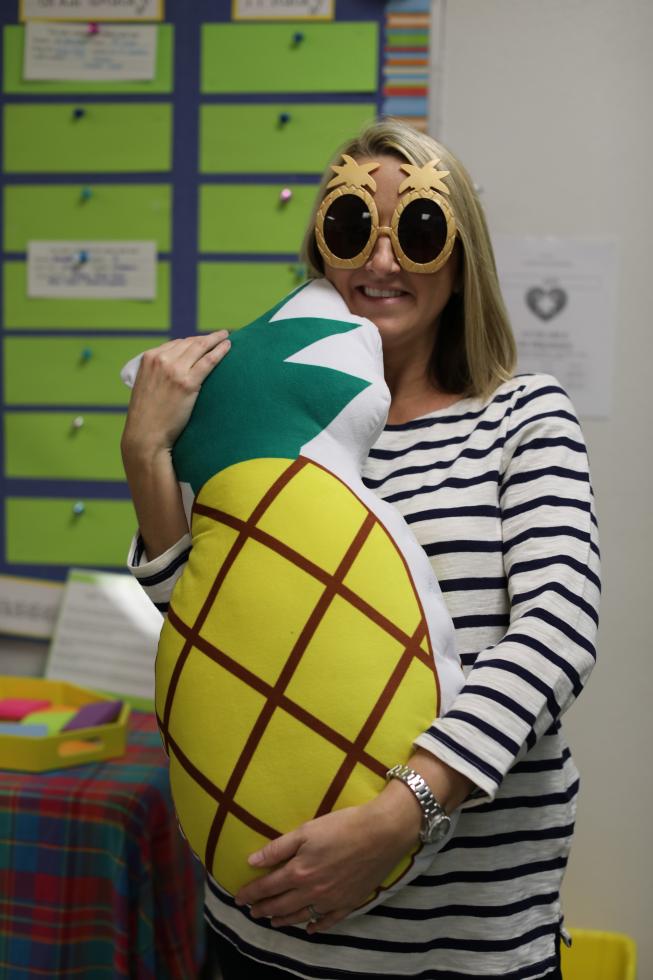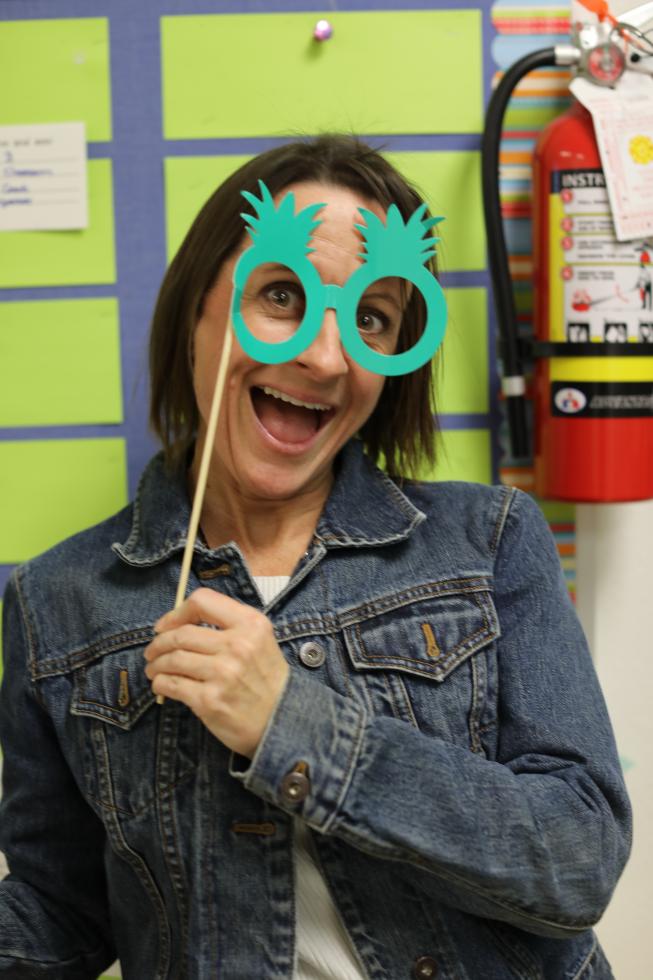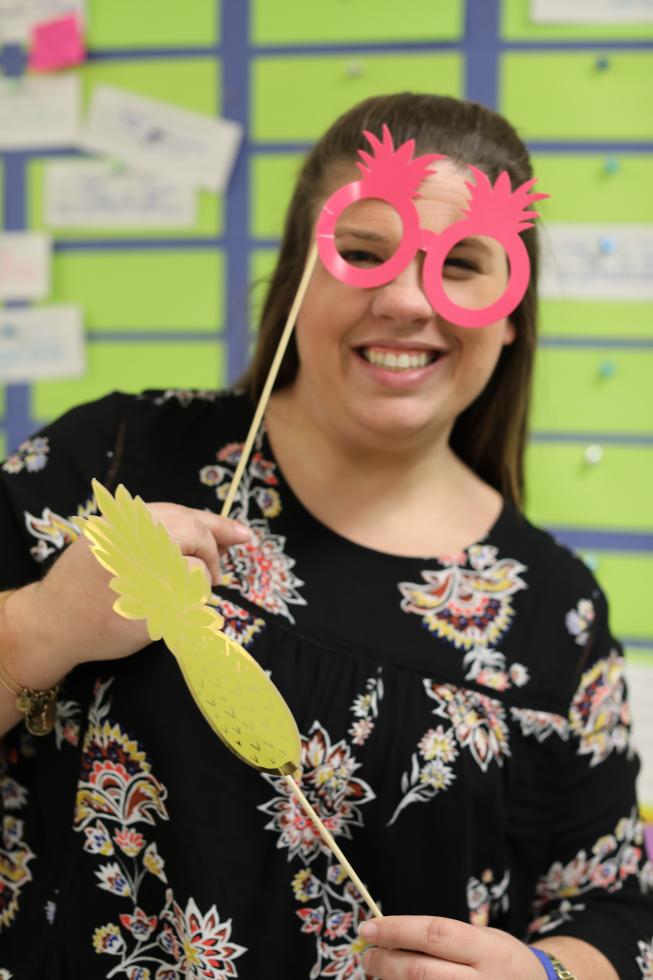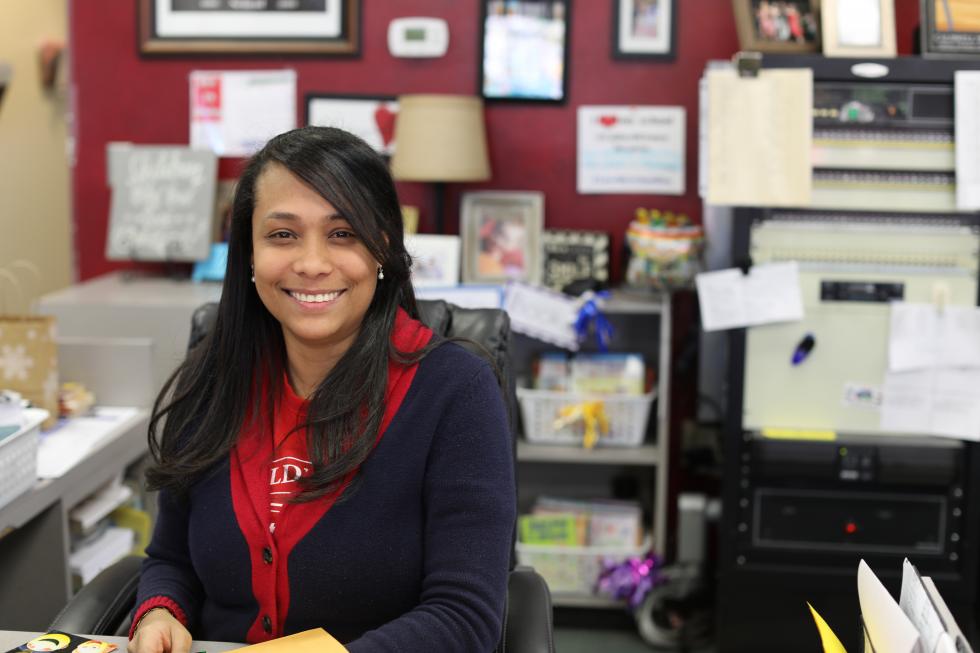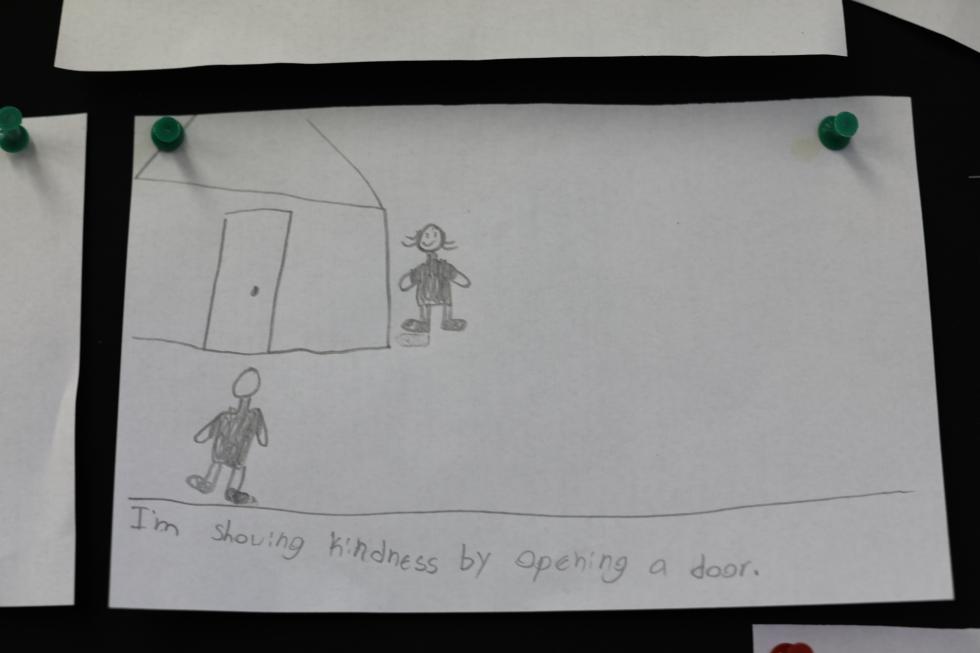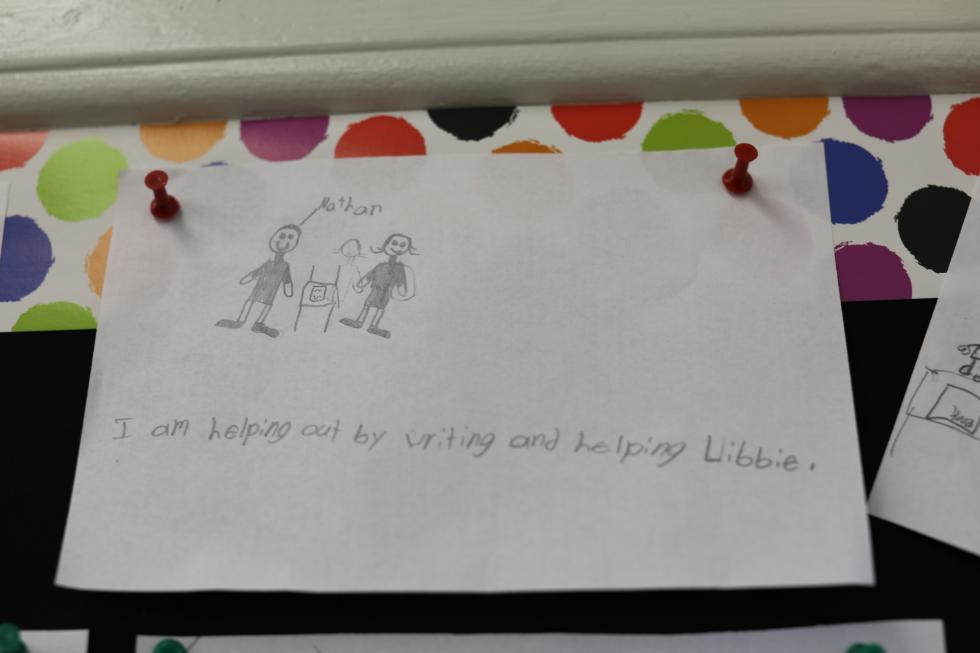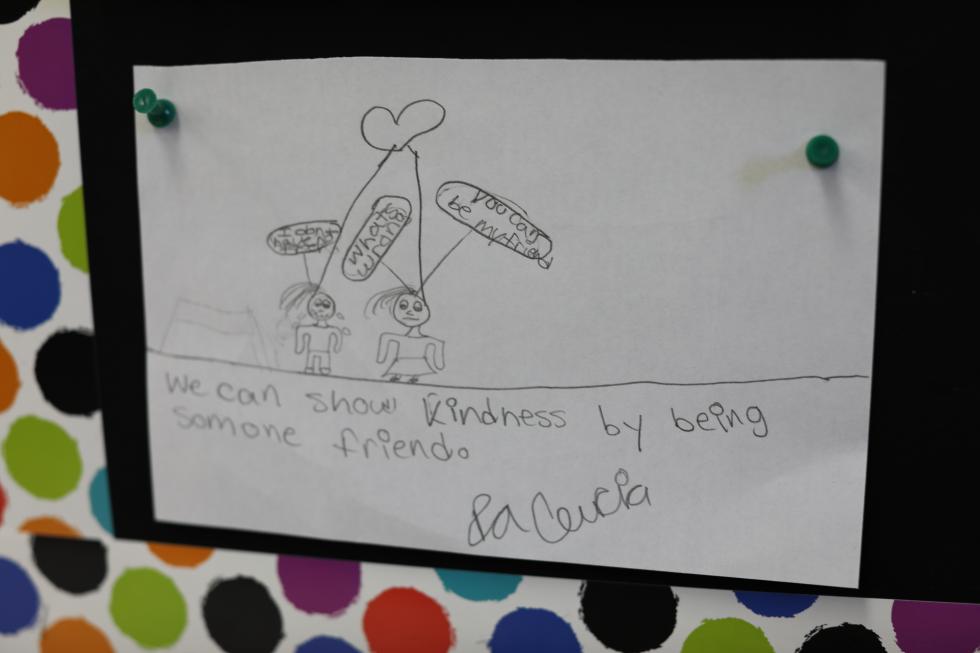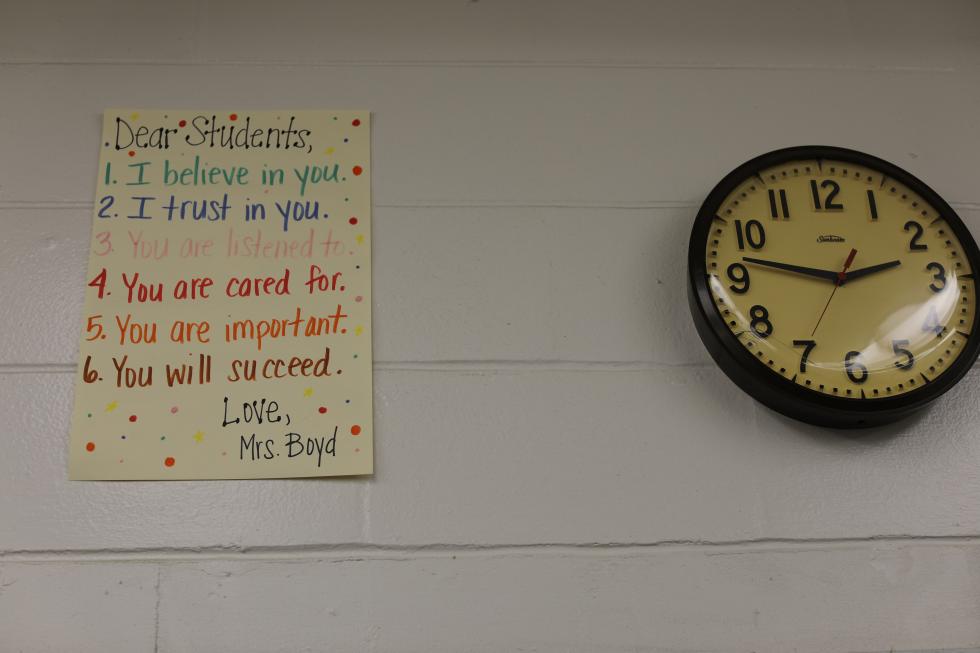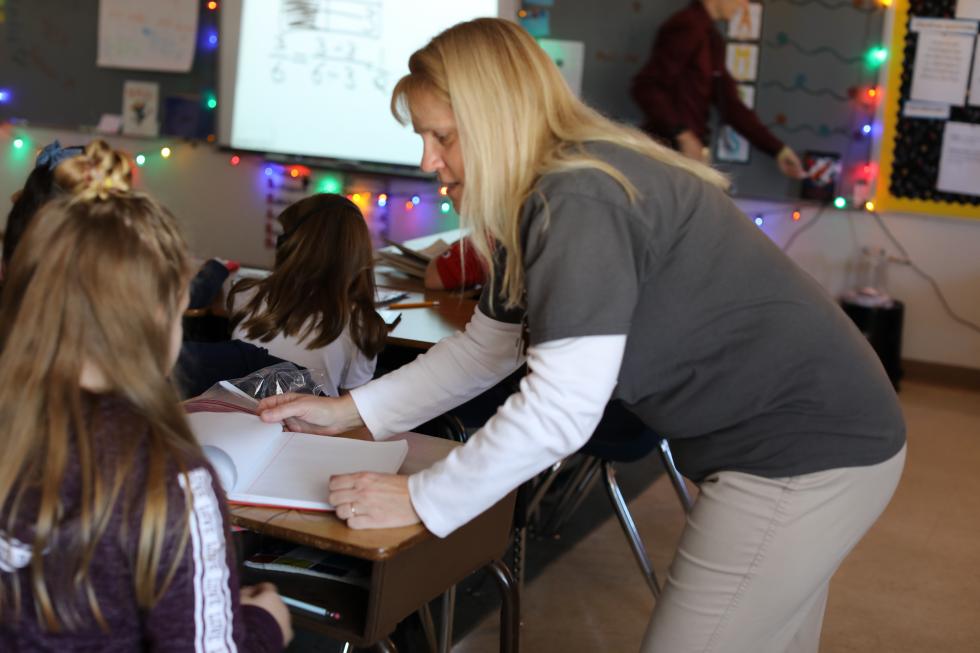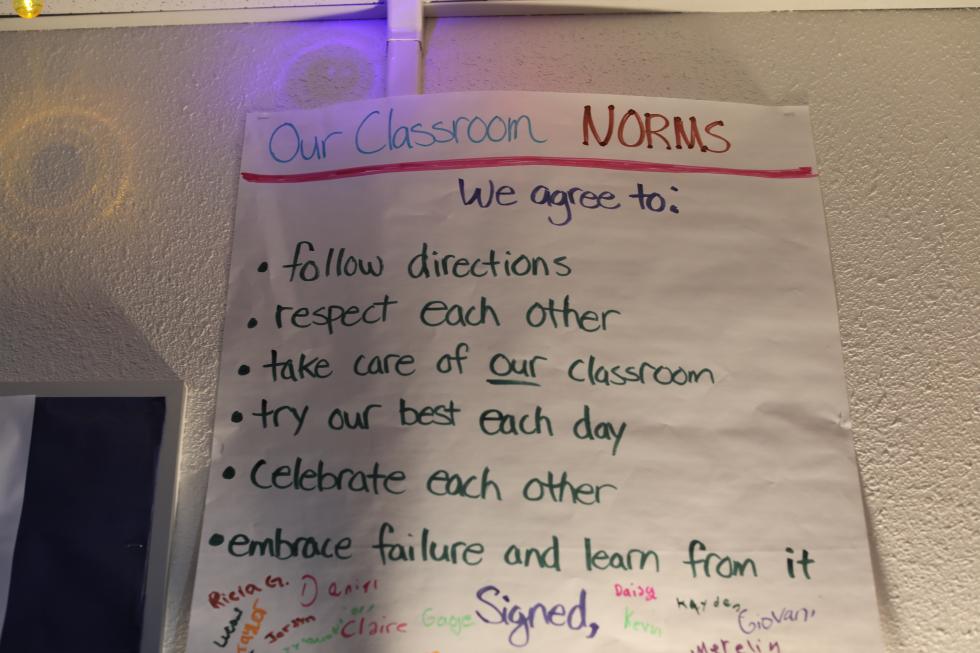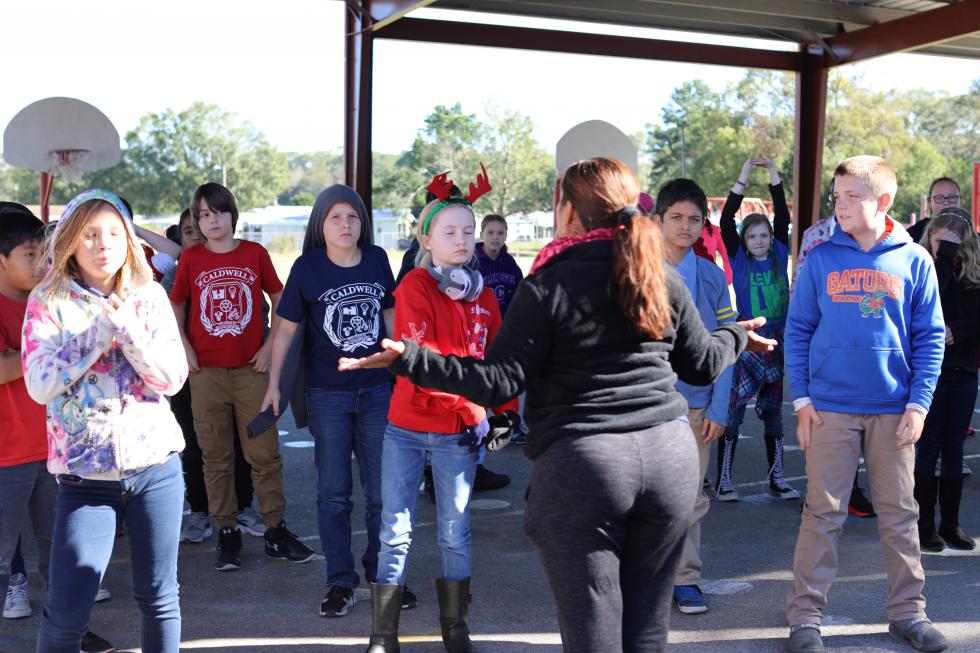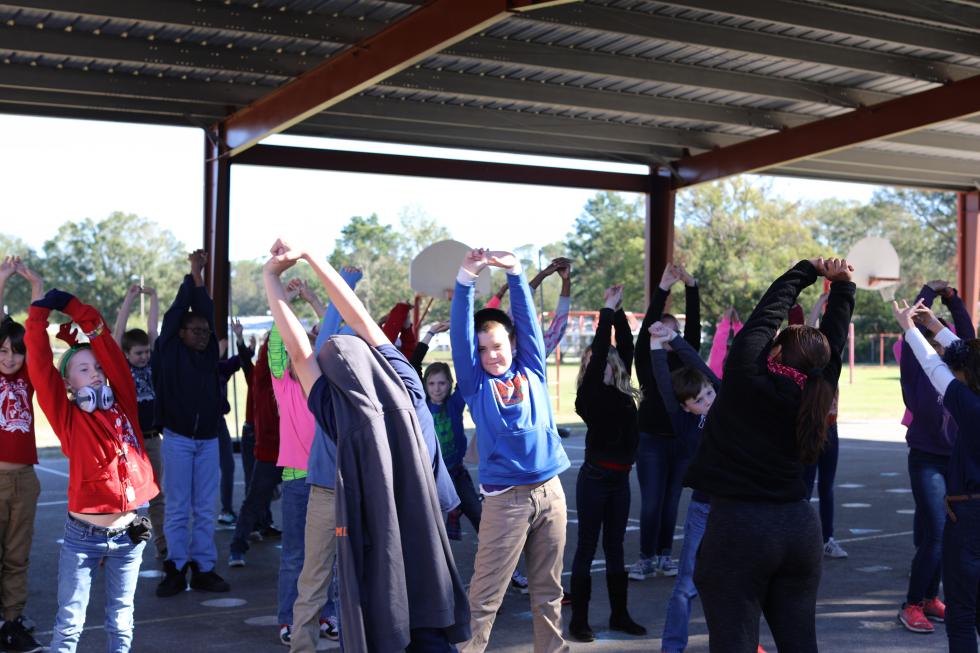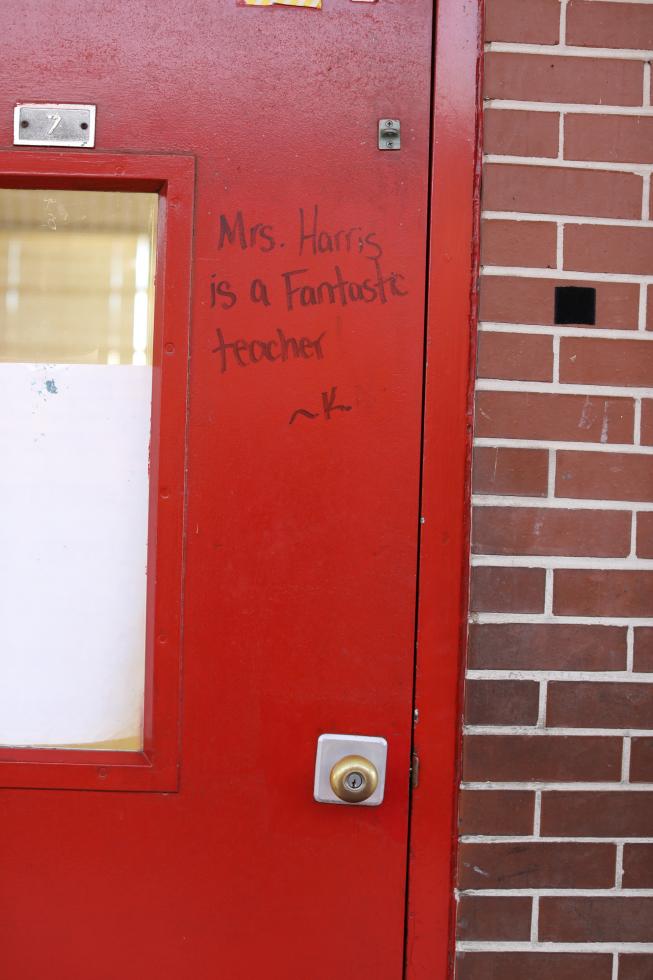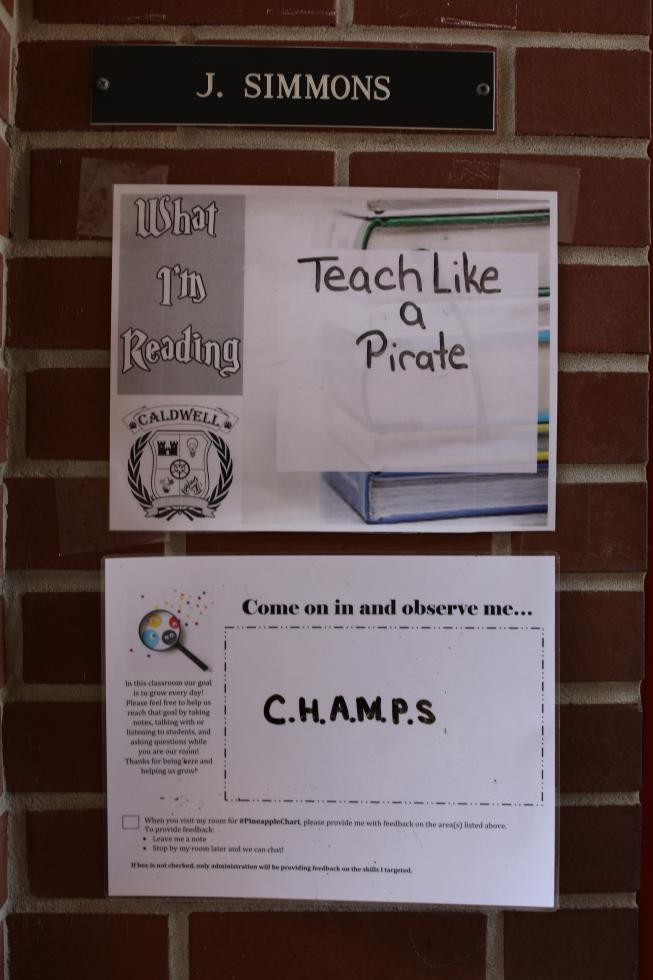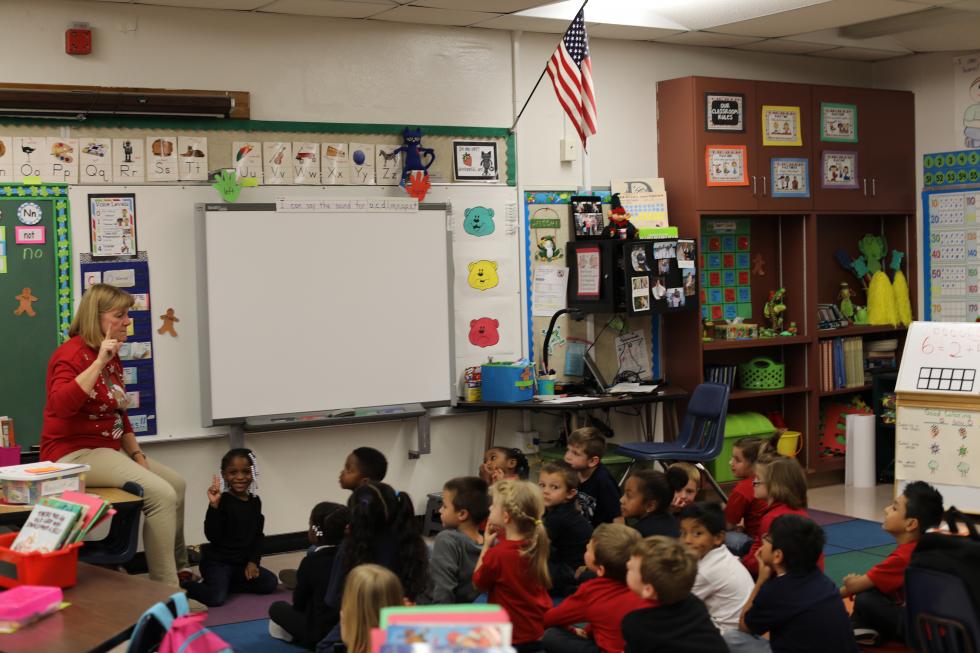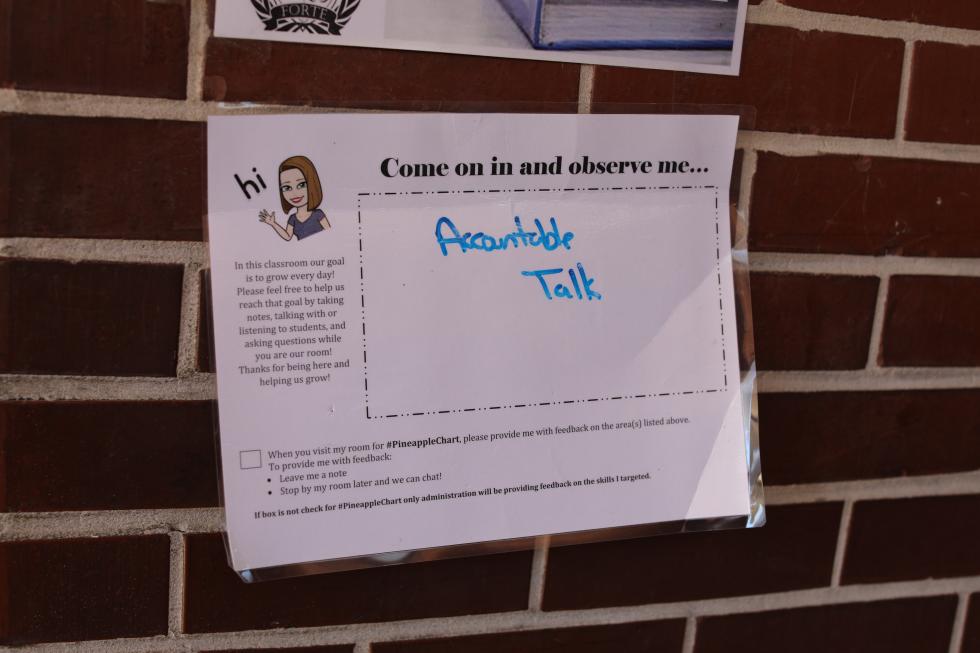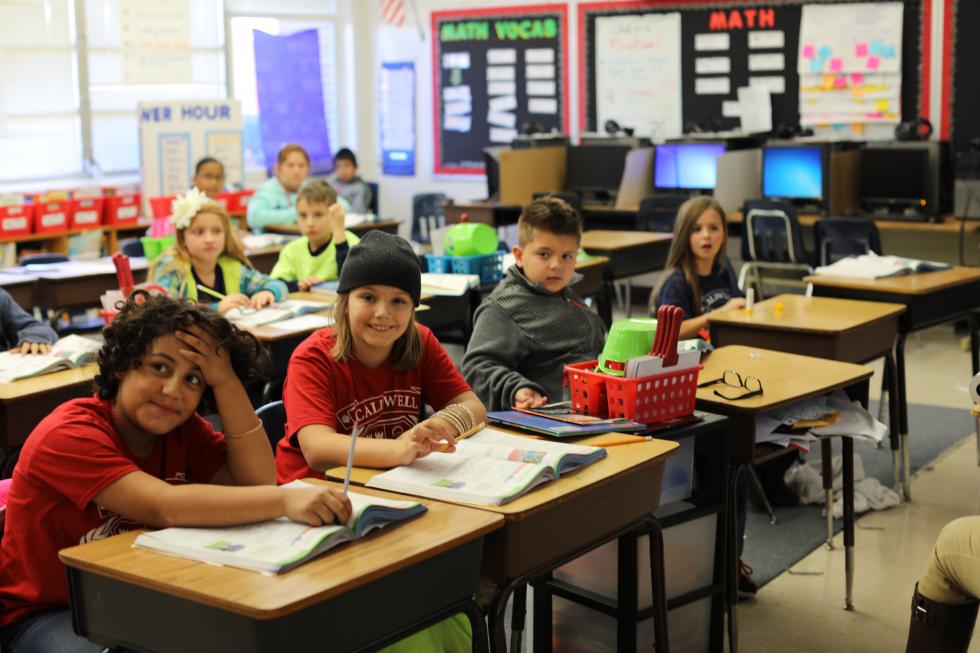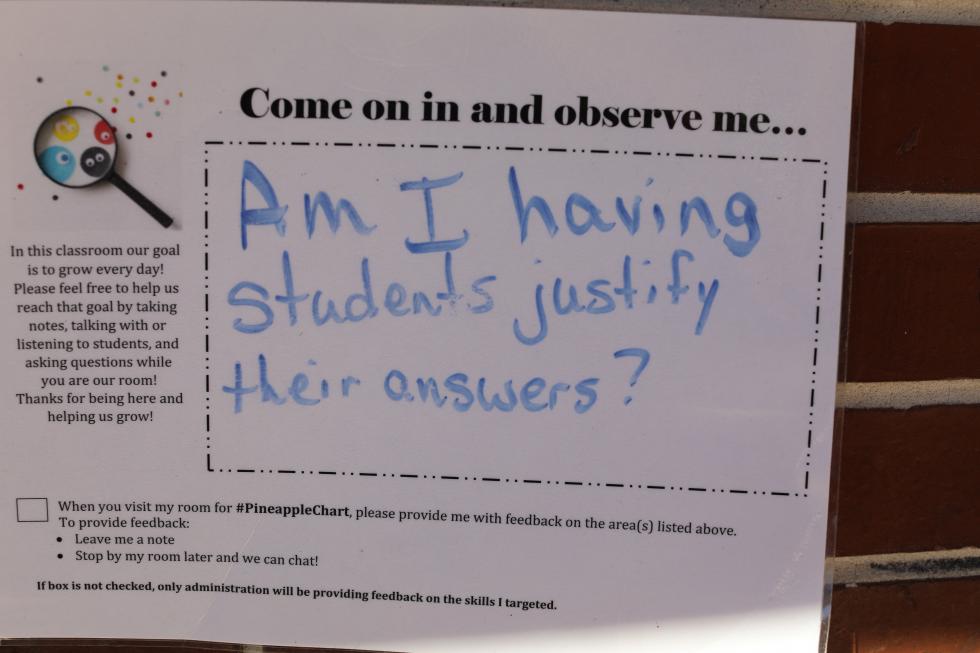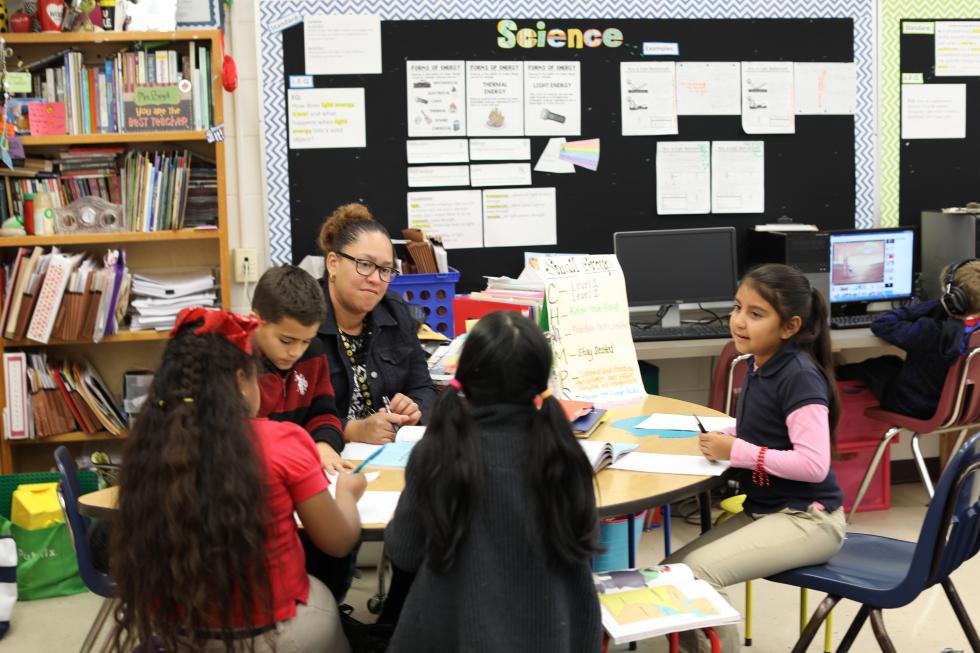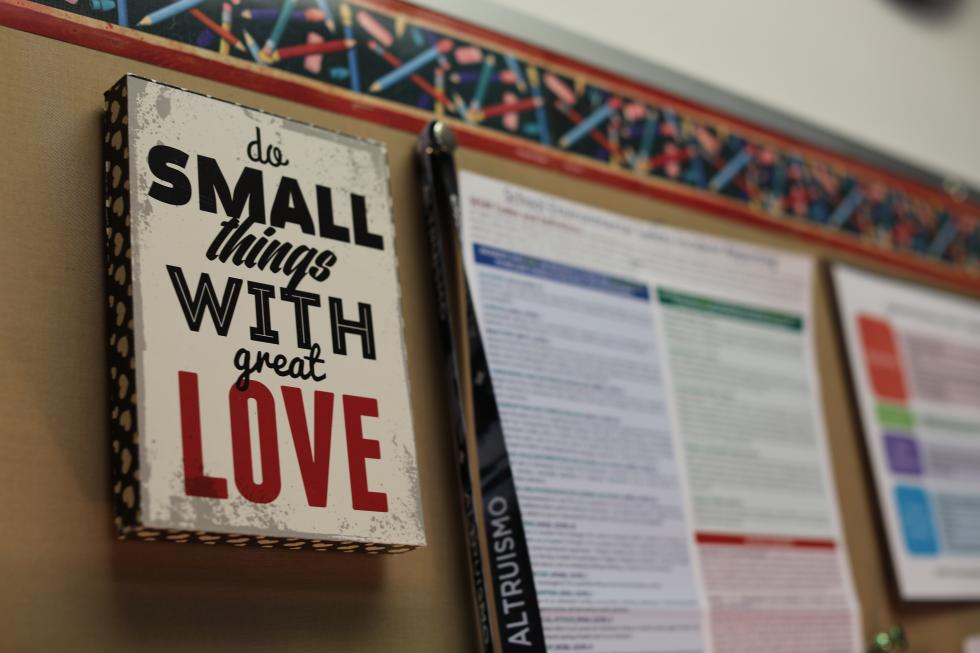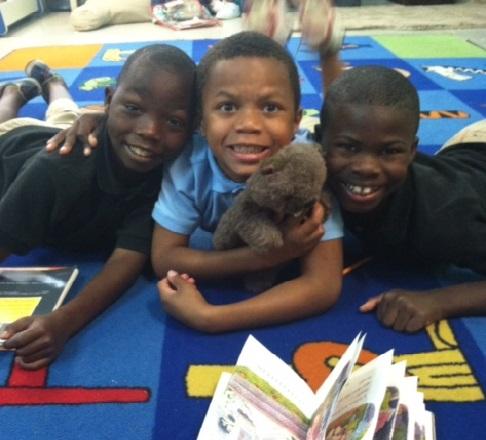School Is My Happy Place
Educator Effectiveness Spotlight
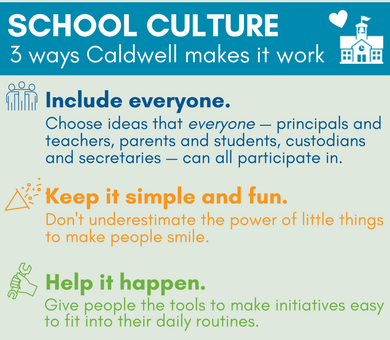 Happy staff. Hardworking students. Supportive parents.
Happy staff. Hardworking students. Supportive parents.
School culture matters.
It improves teachers’ morale and the quality of their instruction. It boosts students’ behavior and learning. But building a positive school culture can be hard.
Caldwell Elementary School in Auburndale, Florida, has a school culture that ROCKS. They use three main strategies to develop (and sustain) this positive culture.
PINEAPPLE CHARTS
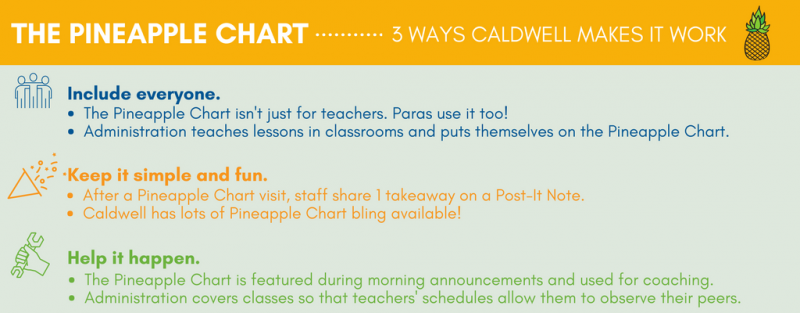
Pineapple Chart: How it Works
Click through the photo gallery below to learn how the Pineapple Chart works.
Pineapple Chart: Getting Started
School culture gets better when staff members learn from each other. In the past, Caldwell created vertical pairings by assigning each teacher a partner in another grade level to observe. But this process felt mandatory. There was a desire among staff to learn from each other in a more self-directed way.
Assistant Principal Katie Ashmore was browsing Twitter when she came across Hack Learning Anthology by Mark Barnes that included a chapter on Pineapple Charts. She thought it seemed like an easy way to give teachers more ownership. So after testing was over in May, she introduced the Pineapple Chart by framing it as an opportunity for everyone to put themselves out there together.
In its second year, the Pineapple Chart has evolved and new elements have been introduced, such as the Pineapple Chart Challenge. Each week, a name of someone who used the Pineapple Chart is chosen at random. The winner chooses a day, time and lesson objective, and Ms. Ashmore or the principal, Ms. Hill, create a lesson plan and go into the winner’s classroom to teach it to students.
Watch the video clip below to learn more about the process Ms. Ashmore used to implement the Pineapple Chart.
CHallenges
One challenge that can arise with the Pineapple Chart is that the same group of people will use it. Ms. Ashmore explains, “It’s outside of some people’s comfort zones.” She advises administrators at other schools to celebrate these people too, saying, “Recognize and express appreciation for them doing something that feels risky for them.”
Pineapple Chart: Benefits
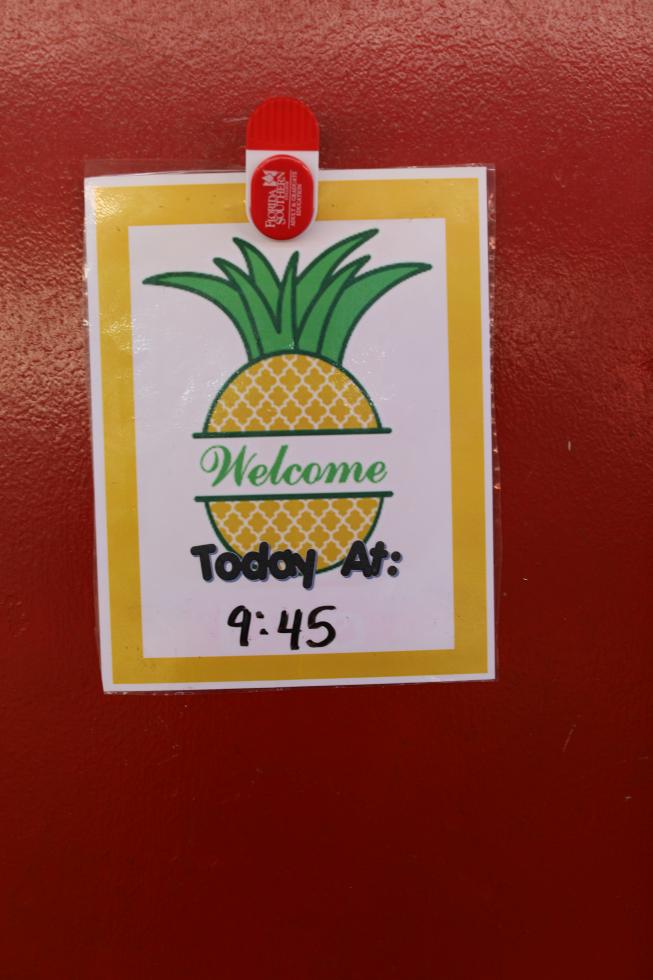 Not evaluative; focuses on professional growth
Not evaluative; focuses on professional growth- Opens up dialogue about instruction and professional goals
- Encourages an open-door culture that is transparent and collaborative
- Increases teachers’ comfort level with being observed
- Gives teachers opportunities to practice not only getting feedback, but giving feedback
- Provides consistent chances for informal, low-stakes peer observation
- Fosters a willingness to share ideas and resources, using a tool that is teacher owned and operated
- Can make lessons more engaging and relevant to students’ lives
Pineapple Chart: Resources
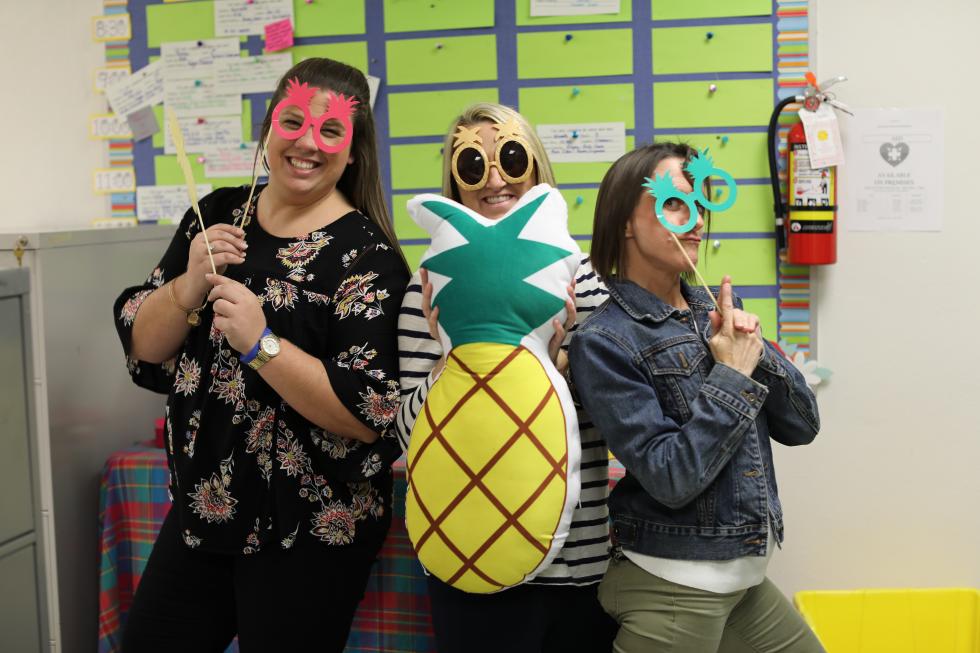 Blog Post: How Pineapple Charts Revolutionize Professional Development
Blog Post: How Pineapple Charts Revolutionize Professional Development- Blog Post: Learning from Your Peers with Pineapple Charts
- Blog Post: Hacking Education – The Pineapple Chart
- Materials: Pineapple Chart Instructional Coaching
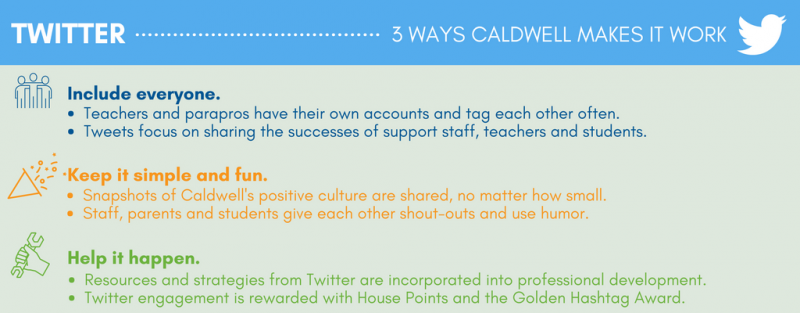
Twitter: How it’s Used
How does Caldwell use Twitter effectively?
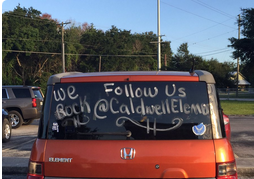 Caldwell staff are extremely active on Twitter! One paraprofessional even advertises the school’s Twitter handle on the back window of her car! Caldwell staff also use their own individual Twitter accounts to “tell their story” — to share all of the good things that go on in the school building each day with students’ parents and the community.
Caldwell staff are extremely active on Twitter! One paraprofessional even advertises the school’s Twitter handle on the back window of her car! Caldwell staff also use their own individual Twitter accounts to “tell their story” — to share all of the good things that go on in the school building each day with students’ parents and the community.
If you scroll through Caldwell’s Twitter page, you will see a lot of evidence of the school’s welcoming culture and the high-quality instruction that takes place. Assistant Principal Katie Ashmore explains the school’s collective purpose for using Twitter:
“Twitter and social media can be a really powerful tool to promote the things that are happening at Caldwell because we know what we do, but our community, our parents and even other schools in the area may not understand the magic that takes place. I want Caldwell’s story to be an epic one of greatness, so I knew it was important for us to start doing a better job promoting that story.”
Caldwell staff also use Twitter as a way to connect and grow professionally by sharing resources and finding new ones. Ms. Ashmore describes Twitter as a tool that can help teachers feel they are “no longer on an island” because it is a way of finding “24-7 support.”
Click through the photo gallery below to see examples of the story Caldwell tells on Twitter.
Connect With Caldwell on Twitter!
HOUSE SYSTEM
House System: How it Works
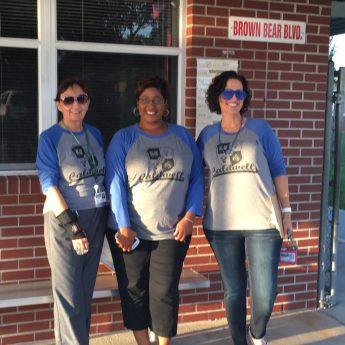 At Caldwell, every staff member and every student is randomly sorted into one of five houses. This means that each house has a mix of different grade levels and roles represented. Assistant Principal Katie Ashmore likens the house system to fraternities and sororities — the school holds competitions, celebrations and assemblies based around the house system, and each house has customized shirts with its own color and symbol. Ms. Ashmore says:
At Caldwell, every staff member and every student is randomly sorted into one of five houses. This means that each house has a mix of different grade levels and roles represented. Assistant Principal Katie Ashmore likens the house system to fraternities and sororities — the school holds competitions, celebrations and assemblies based around the house system, and each house has customized shirts with its own color and symbol. Ms. Ashmore says:
“It makes you feel good when you come to school and you’re part of something.”
The symbols of the five houses come together to form a crest that Caldwell proudly uses as the school’s logo.
 Forte House means strong. Their color is black and their symbol is a fort.
Forte House means strong. Their color is black and their symbol is a fort.
El Major House means the best. Their color is gray and their symbol is two thumbs up.
Philomathes House means love of learning. Their color is blue and their symbol is a light bulb with a heart inside.
Sans Peur House means fearless. Their color is red and their symbol is fire.
Ubuntu House means unity. Their color is green and their symbol is a circle of hands reaching inward.
Staff members earn points for their house for actions such as calling parents and staying active on Twitter. Students earn points for their house for things like attendance, Accelerated Reader and “getting caught” being kind. House points are tracked in real time using Class Dojo. Point totals are also kept updated on a bulletin board and on the school’s website. Every nine weeks, the house with the most points wins!
House System: Getting Started
“What I wanted above all was to increase a sense of excellence and pride within the school.”
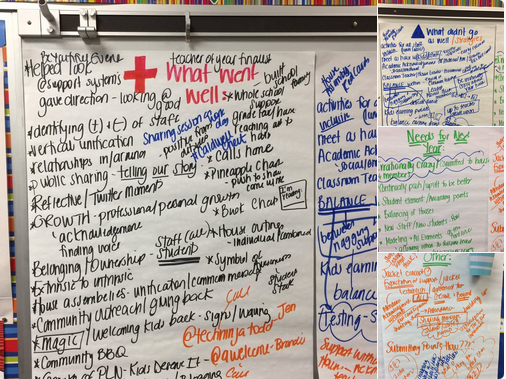 Ms. Ashmore got the idea for the house system after visiting the Ron Clark Academy in Atlanta, Georgia (although she admits that she was also inspired by Harry Potter). First, Ms. Ashmore shared her vision for Caldwell’s House System with teachers. Ten teachers were willing to step up to help get the idea off the ground. Over summer break, these ten teacher-leaders worked together to define the vision and purpose of Caldwell’s House System. “I didn’t want to say ‘this is what we’re doing,’” explains Ms. Ashmore, so they used surveys to crowdsource the creation of the house names. Each house came up with their own color, symbol and song.
Ms. Ashmore got the idea for the house system after visiting the Ron Clark Academy in Atlanta, Georgia (although she admits that she was also inspired by Harry Potter). First, Ms. Ashmore shared her vision for Caldwell’s House System with teachers. Ten teachers were willing to step up to help get the idea off the ground. Over summer break, these ten teacher-leaders worked together to define the vision and purpose of Caldwell’s House System. “I didn’t want to say ‘this is what we’re doing,’” explains Ms. Ashmore, so they used surveys to crowdsource the creation of the house names. Each house came up with their own color, symbol and song.
In the beginning, the five houses were only used by teachers. Administration had always asked teachers to make positive phone calls home for all of their students at the beginning of each school year. Unfortunately, in past years, only five staff members made phone calls home to all of their students’ parents.
Administration recognized that this can be a hard task because the beginning of a new school year is a stressful, busy time. So they announced that teachers could earn points for their house by completing this task. A spark of excitement spread across the school. Soon, parapros were asking if they could participate and the lunch ladies said they wanted to call home too!
After integrating this task with the newly-implemented House System, 46 staff members called parents at the beginning of the school year! So administration expanded house points to other managerial tasks, such as reviewing student’s cumulative folders and IEPs at the beginning of the school year.
“When I started recognizing teachers and celebrating teachers for what they had to do, it just became a shift across campus.”
Ms. Ashmore describes using the House System as a way to “just say ‘thanks for helping our kids.’” Every nine weeks, the winning house receives a special breakfast and little trophies to display in their classrooms. These rewards may not be fancy and glamorous, but Ms. Ashmore says they helped her realize how much “the little things” mean to her staff.
This school year, Caldwell expanded the House System to include all of the students in the school. They explained to students that although they may be five separate houses, they are five houses that equal one school.
Watch the video clip below to learn more about how Caldwell implemented the House System.
LITTLE NOTES
Little Notes: How They Work
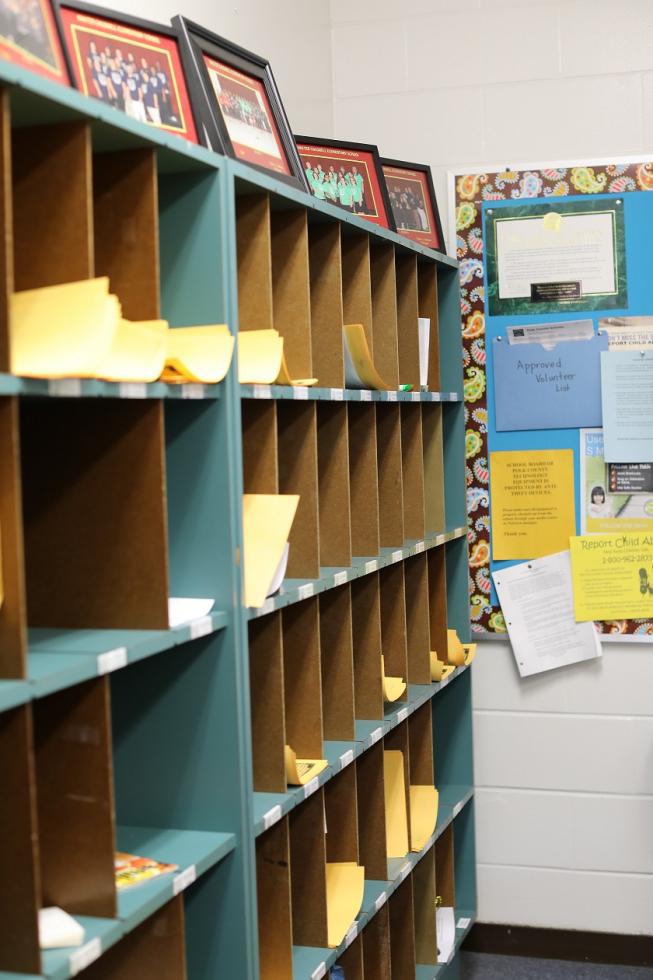 Caldwell administrators encourage staff members to leave short, encouraging notes in each other’s mailboxes. Ms. Ashmore explains, “The best way to make someone’s day is by dropping a sweet little note in their box. When you walk in a room and see it tacked to the bulletin board or you see it laying on their desk attached to something where it’s safe and it’s kept out of harm, it makes you realize that one little note really made a difference for that person that day.” However, even with the best of intentions, it can be hard to remember to actually write notes to your coworkers consistently. To help staff members do this for each other, Caldwell administrators set up a table next to the mailboxes that has everything needed to compose thoughtful, positive notes. Ms. Ashmore explains:
Caldwell administrators encourage staff members to leave short, encouraging notes in each other’s mailboxes. Ms. Ashmore explains, “The best way to make someone’s day is by dropping a sweet little note in their box. When you walk in a room and see it tacked to the bulletin board or you see it laying on their desk attached to something where it’s safe and it’s kept out of harm, it makes you realize that one little note really made a difference for that person that day.” However, even with the best of intentions, it can be hard to remember to actually write notes to your coworkers consistently. To help staff members do this for each other, Caldwell administrators set up a table next to the mailboxes that has everything needed to compose thoughtful, positive notes. Ms. Ashmore explains:
”It kind of eliminates me having to remember [to write a note] when I get back to my room. It affords me the resources that we need to uplift each other.”
Watch the video clip below to learn more about how Caldwell uses positive notes.
MAKE THE CALL
Make the Call: How it Works
When someone is “caught” doing something good — even something small — they might receive a red card. A red card earns a positive phone call home from Assistant Principal Ms. Ashmore.
“It just sets a tone of focusing on the positive… Now we’ve become the school that calls for GOOD.”
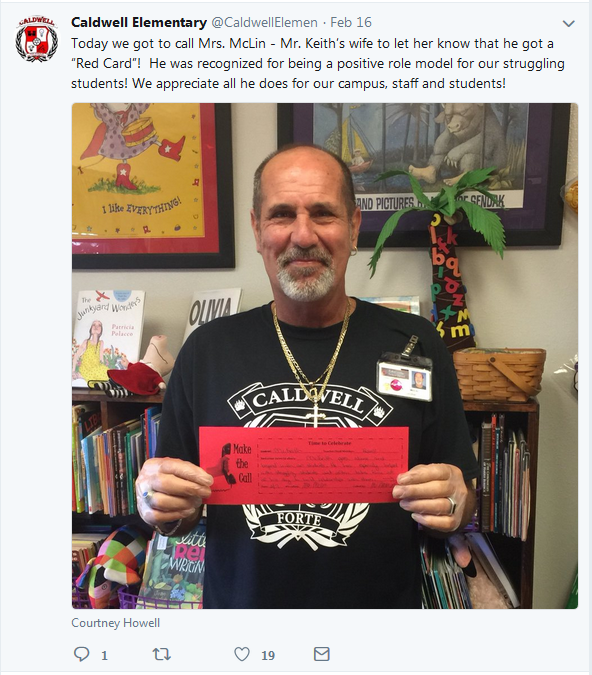 There are no defined rules about what behaviors qualify for a red card — red cards can be issued for anything that someone thinks is worth celebrating.
There are no defined rules about what behaviors qualify for a red card — red cards can be issued for anything that someone thinks is worth celebrating.
Any staff member — including teachers, paraprofessionals, secretaries, cafeteria staff and custodians — can give a student a red card. Sometimes, even staff members themselves receive red cards!
Mr. Keith, the custodian, received a red card for being a positive role model and Mrs. Ashmore made a phone call to his wife to let her know!
Watch the video clip below to learn more about Caldwell’s Make the Call System.
Make the Call: Getting Started
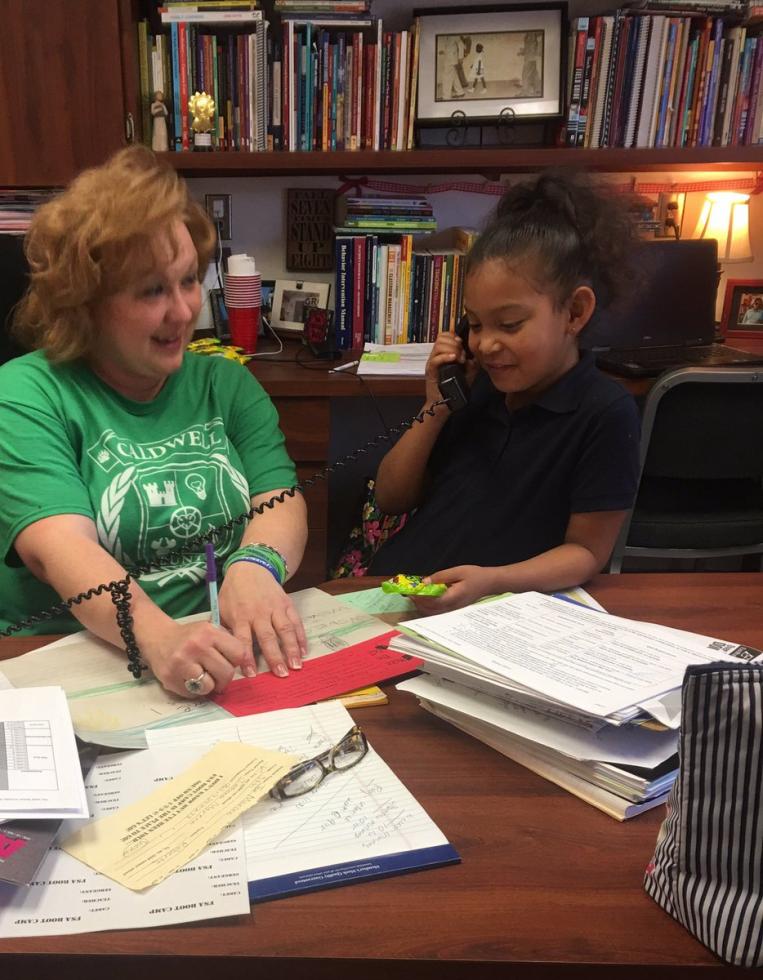 Administrators and teachers noticed that they were talking a lot more about the negative aspects of their days than the positive aspects. With inspiration from Kids Deserve It, they decided to implement the Make the Call system across campus.
Administrators and teachers noticed that they were talking a lot more about the negative aspects of their days than the positive aspects. With inspiration from Kids Deserve It, they decided to implement the Make the Call system across campus.
“I really wanted phone calls that came from school to not only be about a sick child in the clinic or about a behavior problem, but to also be about the good things, ” explains Ms. Ashmore.
So last January, Caldwell began their Make the Call system. At first, staff members were given five cards and tasked with giving them out to deserving students. Ms. Ashmore says that doing this became a joyful spot in the day for both students and staff. Between January and the last day of school, over 500 positive phone calls home took place!
“That two minute phone call home is more positive than I ever realized.”
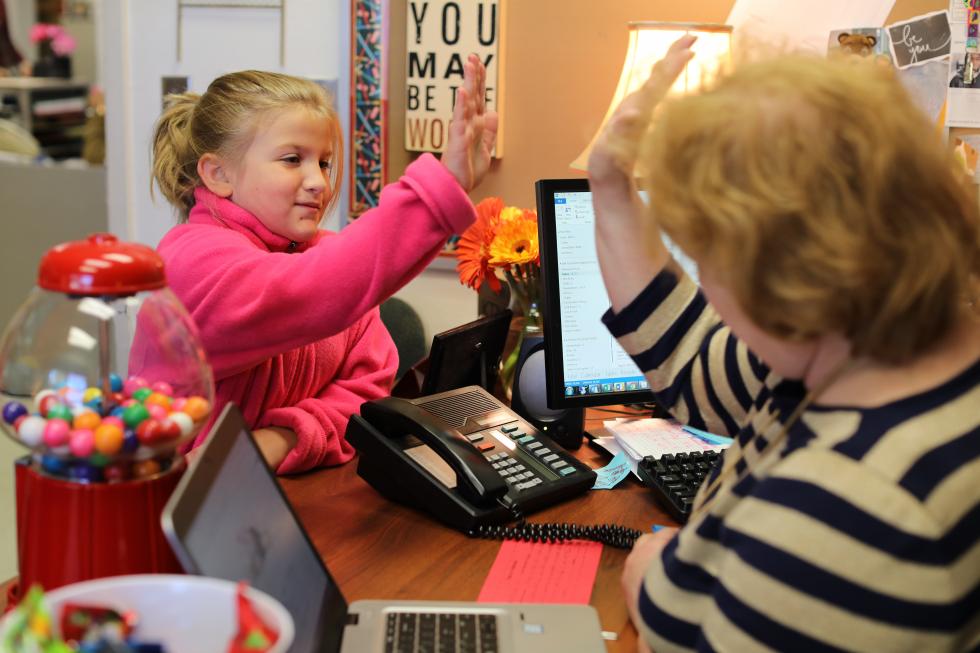 Caldwell staff began to realize how much these calls meant to students’ families. Red cards got posted on refrigerators, shared on Facebook and resulted in special trips out for ice cream. One parent shares, “I loved when I got a phone call home from Caldwell that my daughter had received a red card for her great behavior. It just really means a lot to me how they recognize these kids.”
Caldwell staff began to realize how much these calls meant to students’ families. Red cards got posted on refrigerators, shared on Facebook and resulted in special trips out for ice cream. One parent shares, “I loved when I got a phone call home from Caldwell that my daughter had received a red card for her great behavior. It just really means a lot to me how they recognize these kids.”
This school year, Caldwell’s goal is to make 1,000 positive phone calls home! And, of course, they share many of these on Twitter.
…& MORE!
Click through the drop down menu below to explore more examples of how Caldwell Elementary builds a positive school culture.
SYMBOL OF AWESOMENESS
At some point in time, a huge wrestling belt came into Caldwell’s possession. Staff decided to repurpose the belt and the Symbol of Awesomeness was born.
The Symbol of Awesomeness is a simple system. Each week, one person on staff is chosen to receive the belt in acknowledgement of something good they have done. The purpose of the Symbol of Awesomeness is to highlight the good things that all staff members (teachers, secretaries, parapros, custodians and more) do each week. Symbol of Awesomeness recipients are awarded a small trophy to keep after the belt has moved along to the next person.
BALLOONED
When administrators at Caldwell want to acknowledge a staff member for something positive, they will often surprise them with a balloon and a card in their classroom. Getting “ballooned” is extremely simple, but that’s the point. Ms. Ashmore explains, “A dollar balloon can make people happy!”
FAMILY BBQ
Caldwell administrators and teacher-leaders valued their relationships with the community, but felt like they were always asking for something or just giving parents brochures and literature. Ms. Ashmore explains that together, they decided they wanted to “just give for the sake of giving.”
So they had an early-release day and loaded up a sound system, games and food, and met students coming off of the bus at one of the main apartment complexes that the school serves. Students ran to get their families and even former Caldwell students who were now in middle school or high school came to join. Ms. Ashmore says the purpose was to have some informal time to just laugh and talk with Caldwell’s kids and their families.
“We didn’t take flyers or ask them to come in for parent conferences. We didn’t take any books for them to read. It was just us being with them and celebrating them and having a great time. It lets there be beautiful connections between parents and teachers. We didn’t talk about reading strategies. We just said ‘I love you and here’s a hot dog!’”
Watch the video clip below to hear about the impact Caldwell’s community BBQ had on one student.
CLASS PETS
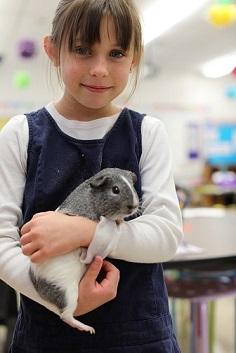 Caldwell Elementary is not only home to happy teachers and happy students — it’s also home to happy lizards and happy guinea pigs!
Caldwell Elementary is not only home to happy teachers and happy students — it’s also home to happy lizards and happy guinea pigs!
Multiple teachers at Caldwell applied for the Pets in the Classroom Grant and received a pet and the necessary supplies for their classroom.
Teachers can use classroom pets to reinforce “soft skills,” such as responsibility, with students — but pets can also positively shape students’ academic experiences. “I practice my reading with our guinea pig,” says one second grade student.
CONNECT
Connect with SREB and Caldwell, or share your positive school culture ideas using:
#schoolismyhappyplace
Click through the photo gallery below to check out more of the everyday magic happening at Caldwell.
Teachers who love teaching teach students who love learning.



